Panera has led with sustainability for years, but its job is far from over.


Panera has led with sustainability for years, but its job is far from over.




18
FRANCHISE FORWARD

A global franchise is exploring a new way to make delivery as environmentally friendly as possible. BY SATYNE DONER





38

With COVID forcing delays and inflation, meatless chains had their own ways of figuring things out. BY SAM DANLEY

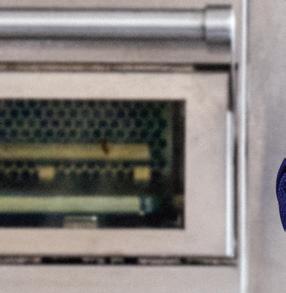


INSIGHT
11





FRESH IDEAS
Battle of the Bowl Chains
Consumers are demanding healthier options, and this segment is reaping the benefits.





 BY SAM DANLEY
BY SAM DANLEY
16
ONES TO WATCH
Check out the plant-based concept making waves on the West Coast. BY SATYNE DONER

42
START TO FINISH
Dan DiZio




The Philly Pretzel Factory leader believes bringing doughnuts to the office is in the past. Pretzels are the star now.
holds a











14
the Self-Ordering Experience
Interactive kiosks help build loyalty and increase revenue.
SPONSORED BY ACRELEC
46
Why Digital Orders Need a Digital Chain of Custody End-to-end data improves efficiency, ensures better customer experiences.
SPONSORED BY APEX ORDER PICKUP
SOLUTIONS
48
Why Restaurants Are Switching to Hybrid Drive-Thru Menuboards
They’re the perfect tool for the post-pandemic landscape.
SPONSORED BY DSA SIGNAGE
50
2023 Restaurant Mantra: Operational Efficiency
Tankless water heaters can reduce energy use by 40 percent while saving space.
SPONSORED BY INTELLIHOT
52
How Restaurants Can Reap Savings in an Uncertain Market Automating cash management leads to improved profitability.
SPONSORED BY LOOMIS
43
Restaurant Equipment & Technology / July 2023


As restaurants continue to combat new challenges, here are some of the companies and vendors offering solutions.

54
Looking to Improve Kitchen Operations? Start with Labeling Save time, reduce waste, and improve efficiency with NCCO’s DateCodeGenie.
SPONSORED BY NCCO 56
Why Manual Inventory Counts Are a Thing of the Past Fast and accurate mobile AI computer vision counts improve efficiency while unlocking supply chain automation.
SPONSORED BY NOMAD GO
58
Restaurant Tech: Why Operators Need a Full-Service Technology Partner


The right partner keeps the focus on the customer experience, not technical difficulties.
SPONSORED BY R.F. TECHNOLOGIES, INC.
60
How a 20-Unit Franchisee Saved $8,000 Per Store
With top-line costs rising, practical cost-cutting measures are more pivotal than ever.
SPONSORED BY RESTAURANT TECHNOLOGIES
62
Leveraging Automation for Mixed SKU Case Palletizing and Route Sequencing
How restaurants can get the right mix of products on every pallet.
SPONSORED BY SSI SCHAEFER
64
How Automation in the Coffee Space is Improving Both Operations and the Customer Experience
With the simple push of a button, operators can provide consistent, delicious coffee.
SPONSORED BY SEB PROFESSIONAL
66
Battling Labor Shortages and Rising Food Costs with Technology
How technology is revolutionizing the back-of-house.

SPONSORED BY TRANSACT TECHNOLOGIES—BOHA!
68
Maximizing Drive-Thru Traffic with Outdoor Digital Reader Boards
How to boost drive-thru efficiency and revenue.
SPONSORED BY WATCHFIRE
70
The End-to-End Solution that Will Increase Drive-Thru Velocity and Sales Operators report a return on investment in as little as nine months after installing this solution.
SPONSORED BY XENIAL
EDITORIAL
EDITORIAL DIRECTOR
Danny Klein
dklein@wtwhmedia.com
QSR EDITOR Ben Coley bcoley@wtwhmedia.com
FSR EDITOR Callie Evergreen cevergreen@wtwhmedia.com
ASSOCIATE EDITOR Sam Danley sdanley@wtwhmedia.com
CUSTOM MEDIA STUDIO DIRECTOR OF CUSTOM CONTENT Peggy Carouthers pcarouthers@wtwhmedia.com
ASSOCIATE EDITOR, CUSTOM CONTENT Charlie Pogacar cpogacar@wtwhmedia.com
ASSOCIATE EDITOR, CUSTOM CONTENT Kara Phelps kphelps@wtwhmedia.com
ART & PRODUCTION ART DIRECTOR Tory Bartelt tbartelt@wtwhmedia.com
GRAPHIC DESIGNER Erica Naftolowitz enaftolowitz@wtwhmedia.com
SALES & BUSINESS DEVELOPMENT

GROUP PUBLISHER Greg Sanders gsanders@wtwhmedia.com
NATIONAL SALES DIRECTOR Eugene Drezner edrezner@wtwhmedia.com
919-945-0705
NATIONAL SALES MANAGER Edward Richards erichards@wtwhmedia.com
919-945-0714
NATIONAL SALES MANAGER Amber Dobsovic adobsovic@wtwhmedia.com
919-945-0712
NATIONAL SALES MANAGER John Krueger jkrueger@wtwhmedia.com
919-945-0728
CUSTOMER SERVICE REPRESENTATIVE Mitch Avery mavery@wtwhmedia.com
919-945-0722
CUSTOMER SERVICE REPRESENTATIVE Tracy Doubts tdoubts@wtwhmedia.com

919-945-0704
FOUNDER Webb C. Howell
ADMINISTRATION
919-945-0704 / www.qsrmagazine.com/subscribe
QSR is provided without charge upon request to individuals residing in the U.S. who meet subscription criteria as set forth by the publisher.

REPRINTS
The YGS Group
800-290-5460 FAX : 717-825-2150 qsrmagazine@theygsgroup.com www.qsrmagazine.com/reprints
Sponsored content in this magazine is provided to the represented company for a fee. Such content is written to be informational and non-promotional. Comments welcomed at sponsoredcontent@qsrmagazine.com.
WTWH MEDIA LLC
RETAIL, HOSPITALITY, AND FOOD GROUP
Our Bavarian Pretzel Bites are on track to be one of the most profitable products for menus everywhere. A delightful taste, these bites have the versatility to fit on any menu and be served in every daypart. Oh, and they’re good at making customers smile.

Iloved watching “Captain Planet” growing up.
The animated TV series followed five teenagers who used magical rings to summon Captain Planet, an environmentally conscious superhero. I can still hear the theme song’s lyrics in the back of my head, “Captain Planet, he’s our hero, going to take pollution down to zero!” The 1990s show was before its time in how it educated young people about sustainability. Thirty years later, we live in the same reality—climate change cannot be ignored.
Piles of statistics back up this claim, all of which can be found with a simple Google search. Let’s start with the fact that Antarctica loses 151 billion tons of ice per year, which equals the weight of the rock of Mount Everest, according to NASA. Or how about 200 million people will be below sea level in 70 years if levels continue to rise at their current pace, said Nature Communications, a peer-reviewed scientific journal. And if you thought COVID was bad, wait until you hear about dengue fever, a mosquito-borne illness that causes high fever and flu-like symptoms. More severe forms can cause serious bleeding and even death. It’s a disease typically found in tropical regions, but with the rise in global temperatures, the sickness is expected to impact 60 percent of the world’s population in about 40 years, according to Frontiers in Public Health.
The point of all this is to say, climate change is a global problem that affects all. When Panera announced two years ago its plan to become climate positive by 2050, chairman Niren Chaudhary described the problem as “one of the greatest humanitarian crises of our time.”
He followed that up by imploring everyone to act now. The sandwich fast casual certainly walks the walk, with nearly 60 percent of its menu being labeled climate-friendly.
Other restaurants, large and small, have done their part with climate change and continue to strive for more. Amy’s Drive Thru—an emerging plant-based chain in California— uses “living roofs,” or roofs comprising soil and vegetation. It’s not only aesthetically pleasing, but it also helps with stormwater management, reduces energy, and creates new habitats for plants and animals. There’s also the likes of Subway, Sonic, and Starbucks, that are investing in EV charging stations and providing extra convenience for customers willing to be greener.
Research shows that food and beverage brands stand to benefit from taking a stance on sustainability. The National Restaurant Association’s 2023 State of the Industry Report listed zero waste/ sustainability/upcycled foods as one of the top 10 hot trends for this year. A survey from the Association found that 72 percent of adults are more likely to visit a restaurant using sustainable and environmentally friendly business practices. This is especially true of the muchdesired Gen Z and millennial generations, which came in at 81 percent and 77 percent, respectively. Sixty-four percent of adults say they’d likely order food grown or raised in an organic or environmentally friendly way, with millennials at 77 percent and Gen Z at 71 percent.
A lot of people are joining the bandwagon and for good reason. The planet needs help.
Ben Coley, Editor
The world literally needs saving, and restaurants are pinching in.









































































The fast casual revealed a new store honoring its heritage.


PANDA EXPRESS RECENTLY INTRODUCED A PROTOTYPE that pays homage to its American Chinese background in terms of architecture, design, and art. The first restaurant opened this past spring in Dripping Springs, Texas.

Some of the more recognizable elements include a moon gate-inspired entrance, a neon welcome sign in the form of a dragon, a mural celebrating Chinese culture, and pictograms along the drive-thru that tell an American Chinese story. When it comes to the guest experience, the new restaurant has a bigger kitchen to help with speed of service. In exchange, the dining room is 15 percent smaller, but still decorated with terrazzo tables symbolizing Chinese New Year confetti, traditional fretwork tiling, and red lanterns. Panda created the prototype in partnership with ChangeUp, a retail brand agency.
The fast casual’s plan is to open the format in new locations across the country later this year and into the future.
The prototype debuted in Dripping Springs, Texas.In January 2020, Starbucks announced a major sustainability goal to reduce its carbon, water, and waste footprints in half by 2030 using sciencebased targets. The company believes embracing this longer-term mission creates the greatest value for all stakeholders. That announcement three years ago was paired with five strategic priorities—expanding plant-based options; shifting from single-use to reusable packaging; investing in innovative agricultural practices, reforestation, conservation, and water replenishment; finding better ways to manage waste; and developing more eco-friendly stores.

In April, Starbucks revealed two major milestones along this sustainable journey:
















• Co-developed with the World Wildlife Fund, Greener Stores are lower-impact restaurants engaging in renewable energy, waste diversion, energy efficiency, water stewardship, and employee engagement.







• Starbucks set a goal to reach 10,000 Greener Stores worldwide by 2025, and it’s one-third of the way there. The coffee chain is the world’s largest retail builder of shops certified by Leadership in Energy and Environmental Design (LEED), a green building rating program.
• In April, 88 Greener Stores were certified in 18 additional markets, like Argentina, Vietnam, and the U.K.



QUOTE TO KNOW:
“Most of them look no different from any other Starbucks store,” said Grace Yoo, Starbucks Greener Stores global program manager, in a statement. “But there are Greener Stores quietly opening and operating all throughout the world, with unglamorous details like energy-efficient dishwashers, water-saving faucets, and carefully thought-out waste diversion signage to help do our part in mitigating the effects of climate change.”








• As part of the program, customers ordered their beverages and let the barista know they brought their own cups. With every personal cup, guests saved 10 cents and Starbucks Rewards members received an additional 25 bonus stars.

• The pilot ran in 192 participating shops throughout Colorado from April 10 to June 30.

• By the start of 2024, Starbucks wants customers to be able to use their personal reusable cups for every store visit in the U.S. and Canada.

• This is one of a few methods the brand has tested:




Borrow a Cup— Customers order their drinks in designated Starbucks reusable cups and return them to a store. This has been tested in the U.S. and internationally.


100 percent Reusable Operating Models—




In this example, single-use cups are eliminated in favor of reusable cups or for-here-ware (mugs, glass cups, etc.). One Test in Jeju, South Korea, diverted about 200,000 disposable cups from landfills within three months.
QUOTE TO KNOW:
“ We set a bold aspiration to become a resource-positive company—to store more carbon than we emit, to eliminate waste, and to conserve and replenish more freshwater than we use. This aspiration included setting ambitious 2030 targets to cut our carbon, water, and waste footprints in half,” said chief sustainability officer Michael Kobori in a statement. “Innovation is how we will build our next chapter, advance our planet-positive impact, and boldly reimagine our future together.”









BUILD NEW OR ACQUIRE EXISTING LOCATIONS


INVEST IN MODERN, FRESH FORWARD RESTAURANT DESIGNS
LEVERAGE MULTIPLE REVENUE STREAMS






ENGAGE WITH BRAND LEADERSHIP FOCUSED ON FRANCHISEE PROFITABILITY









12.5%
AME -STORE SALES GROWTH %

.8% FULL SYSTEM

















Andrew Pudalov didn’t have any experience in the restaurant industry when he left his Wall Street career to pursue a passion for healthy living. He only had his financial acumen and a vision of serving up wholesome and convenient meals in a bowl.
The idea was to combine the taste and texture of smoothies with the crunch of granola, topped with honey, fresh fruit, and other nutritious fixings. It’s a familiar concept today and one that’s surging in popularity as more consumers seek out better-for-you alternatives to standard fast-casual fare. That wasn’t the case when he opened the first Rush Bowls location nearly two decades ago.
“We were the pioneers,” Pudalov says. “A lot of our time early on was spent on education. People weren’t familiar with the format at first, but now, more people are aware of bowls, and more people are getting into the space.”
Pudalov created a separate wholesale business after opening his first store in Colorado, partnering with Whole Foods to distrib-
BY SAM DANLEYute frozen bowls across the country. That venture came to an end in 2014 when his co-packer closed. By then, he was thinking about franchising, and the wholesale business had given him the crash course in national distribution he needed to make that happen.


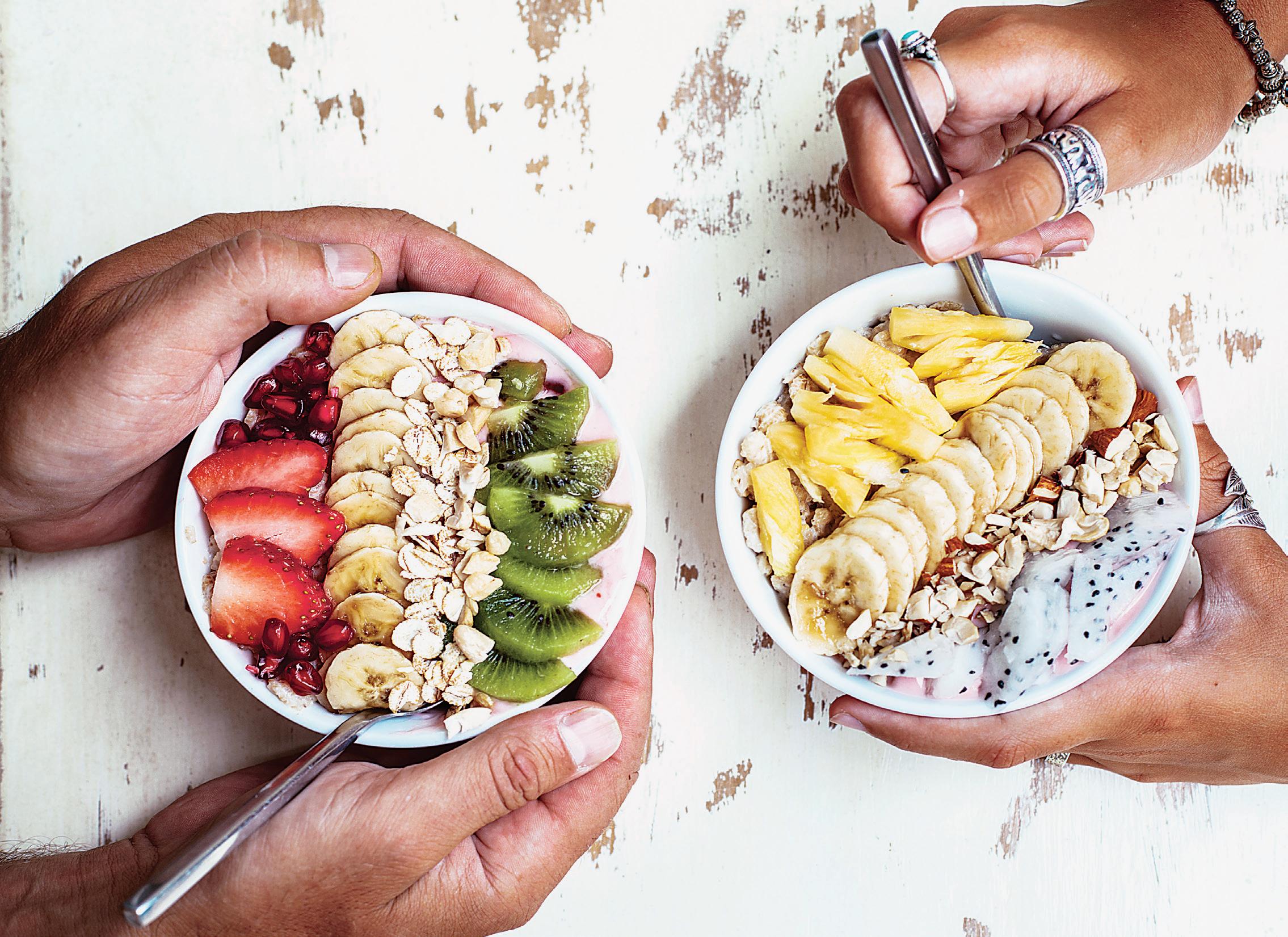
Rush Bowls has expanded to more than 40 units across nearly two dozen states since it started franchising in 2015. It plans to open 20-25 new stores in both new and existing markets this year. Competition in the segment has only accelerated alongside acai’s rise to fame as a celebrated superfood, but Pudalov says his brand maintains a competitive edge by focusing on what it does best.
“We don’t do a lot of esoteric items,” he says. “We’re not distracted by things like salads or sandwiches. We’re focused on premium bowls and smoothies, and we have a lot of diversity within that narrow subset.”
Playa Bowls also is ramping up its nationwide expansion. The fast-casual concept emerged in 2014 as the brainchild of wave
Blended fruit bowl concepts are expanding across the country, thanks to growing demand for healthy options.
riders Robert Giuliani and Abby Taylor, who drew inspiration from the acai bowls they encountered on surfing expeditions to Central America. What started with a blender and a folding table on a boardwalk in Jersey is now a 175-unit chain operating in 20 states.
“We’re heavily populated on the East Coast in beach towns and vacation spots. That’s the core of where we started,” says CEO Dan Harmon. “Now, we’ve recognized that we do really well in airports, we do really well in colleges, and we do really well in the suburbs, so our ability to expand and go into new markets and areas feels really strong.”
Harmon took the helm at Playa Bowls this spring after a five-year stint at Smoothie King, where he was president and chief operating officer. Before that, he spent more than three decades growing his passion for franchising and restaurant operations at Papa Murphy’s, Potbelly, and McDonald’s. Part of what drew him to Playa Bowls was its approach to the franchisor-franchisee relationship, which is different from what he’s experienced in the past.
The company works with a diverse group of operators, from Gen Z entrepreneurs launching their first venture to surfers with seed money and retired Wall Street execs.
“The people that we’re attracting love the brand,” Harmon says. “They’re not just trying to open a business. They’re really thinking about how to grow the store pipeline.”
Playa Bowls opened 37 new stores and entered nine new markets in 2022. It also signed 77 development agreements in seven new territories. It plans to open at least 60 locations this year. Harmon sees that number reaching triple digits “pretty soon.”
He says the competitive landscape for healthy bowl concepts is “getting aggressive,” but a refusal to cut corners helps the brand stand out in an increasingly crowded category. As an example, Playa Bowls sources acai berries from Brazil to formulate its proprietary blend, which contains around 50 percent more pulp than the typical acai product.
“We have a lot of conversations around the quality of our ingredients,” Harmon says. “There is no compromise. We need our vendor partners to deliver on that, and we’re not going to settle for something that doesn’t meet our standards.”
Playa Bowls also offers coconut bowls, pitaya bowls, mango bowls, smoothies, juices, specialty coffees, and more. Harmon believes opportunities exist to optimize the menu as the brand continues growing its footprint.

“Making the menu easier to navigate for customers could also take out some of the costs for franchisees,” he says. “We have good unit economics, but I think we make it even better.”
Menu innovation has been a key growth driver for Vitality Bowls. The “superfood cafe” concept specializes in acai bowls

but is finding success with a savory menu that features grain bowls, wraps, and other healthy bites. More recent additions include a line of frozen acai bowls and a proprietary line of bottled beverages, which it plans to roll out nationwide this year. Founder and president Tara Gilad launched the company in 2011 after discovering her daughter’s severe food allergies, so all of the products are prepared in kitchens that are designed to avoid cross-contamination.
“We launched the savory menu during the pandemic, which was challenging, but also exciting, because the numbers proved to be very successful,” Gilad says.
On the heels of that sales momentum, Vitality Bowls is ramping up its restaurant growth plans. Last year it opened nine new locations and signed 20 development agreements. It’s on track to ink 30 deals this year. The brand operates in 19 states and has more than 120 locations either open or in the construction stage.

Last year marked a significant milestone for Vitality Bowls. Gilad says it entered a new phase of growth with its first five-unit development agreement. The deal was struck with an operator in Arizona.
“When we first started, we wanted to work with hands-on owner-operators who could bring the brand into their community and prove the concept could be successful, then potentially grow into a second location,” she says. “Now, we’re able to scale and we’re open to multi-unit franchisees. We’re more focused on operations, increasing our corporate team, and putting together those checklists and training materials for those larger franchisees.”
A focus on second-generation sites has helped the company lower the cost of entry for franchisees, enabling some existing partners to become multi-unit operators for the first time. The company also has introduced architectural changes that reduce the cost of new builds, enabling both new and existing partners to ramp up the pace of new openings.
“Our goal is to help each franchisee become a multi-unit franchisee,” Gilad says. “We also want to keep entering new states and new markets that we’re not currently in.”
The category has grown at a faster pace coming out of the pandemic. Along with the heightened interest in functional foods, healthy bowl concepts typically carry a lower upfront investment. They tend to operate with limited square footage, limited labor needs, and limited equipment.
“By being really efficient, we’ve been able to withstand and succeed during COVID,” Pudalov says.
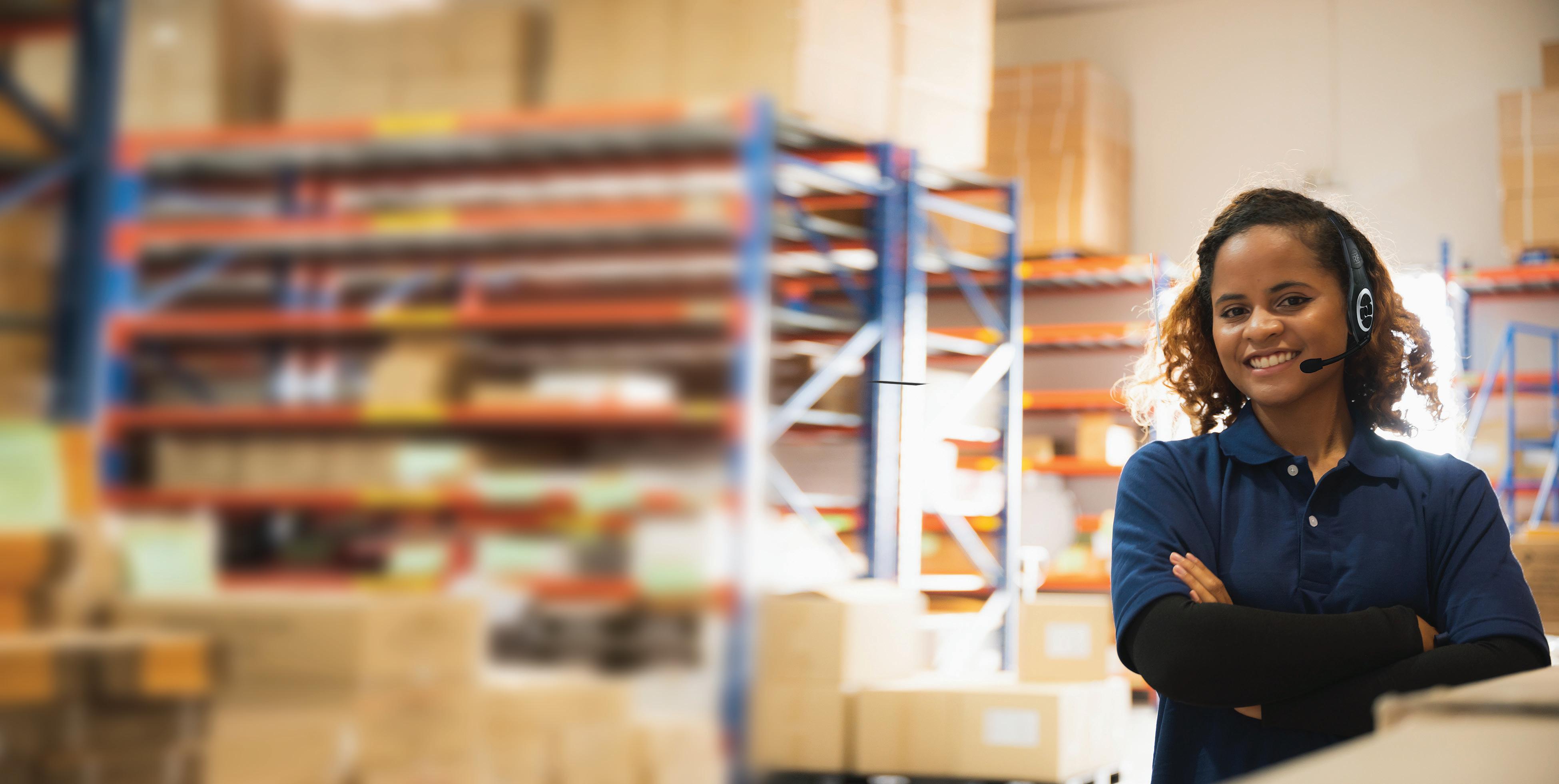


It’s clear that consumers appreciate environmentally conscious brands. In fact, a survey from CGS found that consumers are willing to pay more for products that benefit the environment. But in order for restaurants to see that lift, they need to spread the word about how they’re helping—and when it comes to marketing environmental benefits, it’s a little like the Wild West. Vendor claims of eco-friendliness can be stretched or misinterpreted, and if evidence of deceptive or misleading information ever reaches consumers or the media, the effect on restaurant brands can be devastating.
The practice of misleading consumers about environmental benefits is called greenwashing, and consumers are increasingly aware of it—and averse to it.
“Greenwashing happens when companies don’t have proof of what their product claims to do,” says Michael Winters, president and chief revenue officer of WinCup. “Consumers are becoming more and more educated, especially around the environmental side. When you try to create a shortcut, you think you’re doing something good for your brand, but it could end up hurting you.”
Greenwashing abounds in the world of packaging. Most packaging is petroleum-based, single-use plastic that ends up in waterways and takes hundreds of years to break down. Packaging vendors—and restaurants relying on them—may market these products as “plant-based” even when only a small percentage of the total makeup includes plants.
Paper straws are another major offender, according to Winters. At first glance, paper straws may seem to present a sustainable alternative to traditional plastic straws, even though their user experience is notoriously poor. In addition, paper straws are slower to decompose in landfills due to the chemicals and glues used to hold them together. These chemical coatings and adhesives often contain per- and polyfluorinated (pfas) substances, also known as “forever chemicals,” and are harmful to humans and animals, as well as deadly to marine life. In fact, a 2020 study by the University of Florida tested 38 straws labeled as “biodegradable,” and all the paper straws were found to contain PFAS.
Consumers, especially younger generations, are expressing concerns about the widespread use of PFAS, which has been shown to have negative health effects. Regulatory bodies are also beginning to take note.

“The world is changing—think of the legislative pressure in certain areas of the country over single-use plastics,” says Brad Laporte, CEO of WinCup. “If your restaurant isn’t already under legislative pressure, it’s coming. You’re better off getting on board early.”

WinCup’s phade straws offer an alternative to petroleum-based plastic straws as well as difficult-to-use, PFAS-associated paper straws. phade straws—made with PHA, a material derived from canola oil—are designed to biodegrade completely within months, even in a home composting setting. “We wanted to make sure there weren’t any microplastics left, even after biodegradation was completed, so we did the extra leg work to make sure this wasn’t going to come up as a surprise later down the road,” Laporte says.
Certification or compliance with globally recognized standards guarantee the sustainability of a product. Certifications from TUV Austria and BPI verify the product does what it says it will do.
When a foodservice brand can show proof of certifications like these, franchisees and restaurateurs can proceed with confidence, both in selecting that product and in delivering it to their customers. ◗
‘Greenwashed’ products pose a danger to brands.
At phade®, empty claims aren’t really our thing. That’s why we’ve had several globally recognized, standard-setting bodies certify our PHA-based products are exactly what we say they are –marine biodegradable and home and industrial compostable. It’s an extra step many brands aren’t willing to take and one we wouldn’t dream of skipping. Because you and your customers deserve to know for a fact that the sustainable products you use are helping the planet and, with phade, there’s proof.

Learn more about phade® and our crusade against greenwashing at phadeproducts.com.
CERTIFICATIONS FROM: 13+
nostalgic taste.” The first brick-and-mortar location reached Sacramento’s block in 2019 and has since served over 500,000 customers, ranging from loyal plant-based followers to “veg-curious” meat-eaters.

The development of Horn’s KIND Lab ( Kitchen of Innovation & Discovery), based in Sacramento neighborhood Land Park, has proven to be a major asset in Burger Patch’s menu development. It has been in use for over a year and serves as a preparation hub for ingredients and a brainstorming location for new ones.
At the earliest onset of COVID, Burger Patch’s business traffic increased by upwards of 40 percent, which prompted the building of two additional locations in the Sacramento area. However, this became overpowering, and Horn made the challenging decision to consolidate to the original location.
FOUNDER: Phil Horn and Danea Horn
HEADQUARTERS: Sacramento
YEAR STARTED: 2019
ANNUAL SALES: NA
TOTAL UNITS: 2
FRANCHISED UNITS: 0
A DECADE AGO, BURGER PATCH FOUNDER PHIL Horn and his wife Danea began exploring a plant-based diet. They wanted to be kinder to themselves and their ecosystem but discovered the quick-service industry lacked options.
“When we made the switch to the plantbased lifestyle, we were still missing the nostalgic taste of typical American fast-

food meals,” Horn says. “At that time, [the concept] didn’t exist at all where we lived.”
At the turn of 2016, Horn put together a business plan and hired a chef to bring a menu to life. It includes American staples such as burgers, chicken sandwiches, wraps, and shakes from scratch. At the time, plantbased meat was not readily available in Horn’s region, and he shares that “we went through all kinds of crazy things to try and source that product.”
The first Burger Patch pop-up event in Sacramento was held in early 2017, and to Horn’s delight, it was a hit. He describes the event as having “over 1,000 people show up for a one-day event, waiting in threeto-four-hour lines. It was mind-blowing.”
From there, Horn continued to work on what he calls “modern ingredients but a


Not only that, but supply chain constraints on a niche product were difficult. Often, Horn and his team needed to create their own backups by tweaking recipes and driving hours to find suppliers. Overall, downscaling was the most beneficial plan for the brand’s long-term future.
“Once we consolidated, that location continues to soar, and sales have increased by over 30 percent. We had to take a step back and put our ego aside and learn from what the last year or two has taught us,” Horn explains. “The next phase of what we’ll do is regrow the Burger Patch brand throughout the region.”

For Horn, regrowing the brand means building awareness about its mission. He calls it “convenient consciousness” fast food, but in a kinder way. He wants to spread the idea of “feeding kindness” whether that is through delivering a guilt-free product, saving animals, or giving back to the community.
In May, the Midtown, Sacramento, location celebrated its
Veterans are a source of inspiration and honor to our country. Doug Stritzel, Pickleman’s Gourmet Café Founder and CEO, is proud discounted fees and royalties to veterans who become Pickleman’s franchise owners in this fast-

$10,000 reduction in the initial royalty payments waived for the first six months, Pickleman’s Franchising is letting potential partners know their military




 BY SATYNE DONER
BY SATYNE DONER


well-adjusted to local markets, and its take on pizza delivery has put a larger focus on sustainability than most brands.
“We dreamed about launching reusable packaging [for our pizza] and thought that Dubai would be a great place to test it since it is a very innovative and flexible market,” says Dodo Brands founder Fyodor Ovchinnikov. “Customers in Dubai are also quite concerned about the environment.”

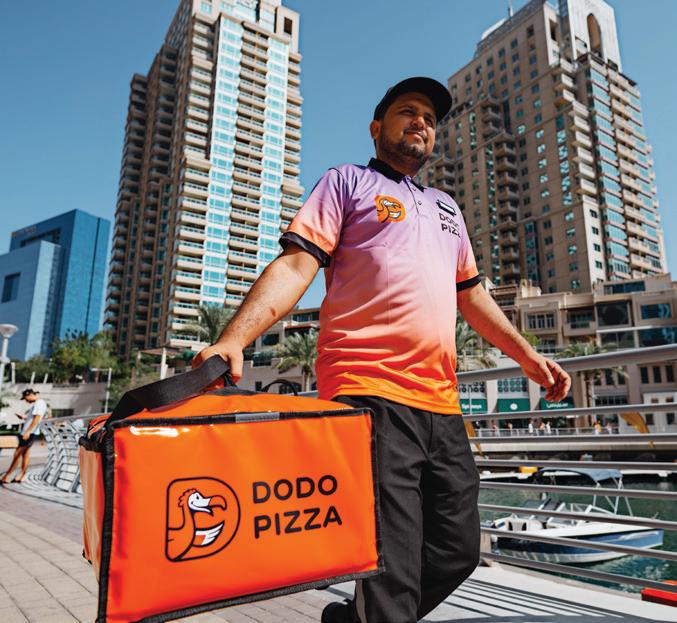
To execute this dream, Ovchinnikov teamed up with PIZZycle, a German startup that created a minimalistic container that can be reused up to 500 times, saving up to 500 disposable pizza boxes. Tests were conducted by both Dodo Pizza and PIZZycle to ensure pizzas were kept warm and in good condition during delivery. Right now, the packaging keeps food warm for an hour.
In the last 60 years, the disposable cardboard box has become a pillar of the pizza segment. Domino’s alone can deliver up to 1.5 million pizzas every day. It begs the question of how much waste these boxes create each year, piling up inside residential garbage cans and college campus dumpsters.

Dodo Pizza wants to reimagine the way guests consume the staple dish. The franchise chain operates in 17 countries, recently launching reusable pizza boxes for delivery in Dubai. It is the first food and beverage company to offer this option in the Middle East, and the first worldwide to make it free of charge for customers. The concept is known for its digital-first approach and new sustainability initiatives.
Dodo Pizza falls under the Dodo Brands umbrella, a collection of foodservice concepts that are tech-powered and poised to franchise globally. These digital-first brands include Dodo Pizza, Doner 42 kebabs, and Drinkit coffee.


Despite its technology-first model, Dodo Pizza has opted out of working with third-party delivery aggregators. Instead, the company prefers direct contact with customers. Its dine-in areas are

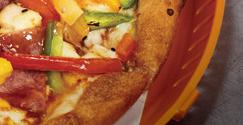

According to PIZZycle, over 3 million single-use pizza boxes have been saved by reusable containers. The idea sprung to life in March 2020 from two design students, and by 2022, the innovation was ready for use. The zero-waste containers are made from polypropylene, which is durable and 100 percent recyclable.
This partnership has only been in the works for about three months, Ovchinnikov says. Ten percent of all orders in Dubai are already completed with the reusable boxes, which Ovchinnikov counts as “quite a good result.”
“We’ve already gained a lot of insight about how to operate with these reusable boxes, so we are planning to continue this experiment,” Ovchinnikov says. “Once we get all our operating systems to work with this packaging, we will start in other markets.”
The idea for Dodo Brands, and eventually Dodo Pizza, started in a Russian city in 2011. Ovchinnikov spearheaded a mission to create a company centered around technology, transparency, and eventually sustainability.
“My idea was to build a digital franchise to combine pizza delivery with an IT system to help control operational quality and efficiency,” Ovchinnikov says. “We were working on developing our own information system.”
After seeking coders to join his startup and become partners, Ovchinnikov began to develop Dodo IS, a suite

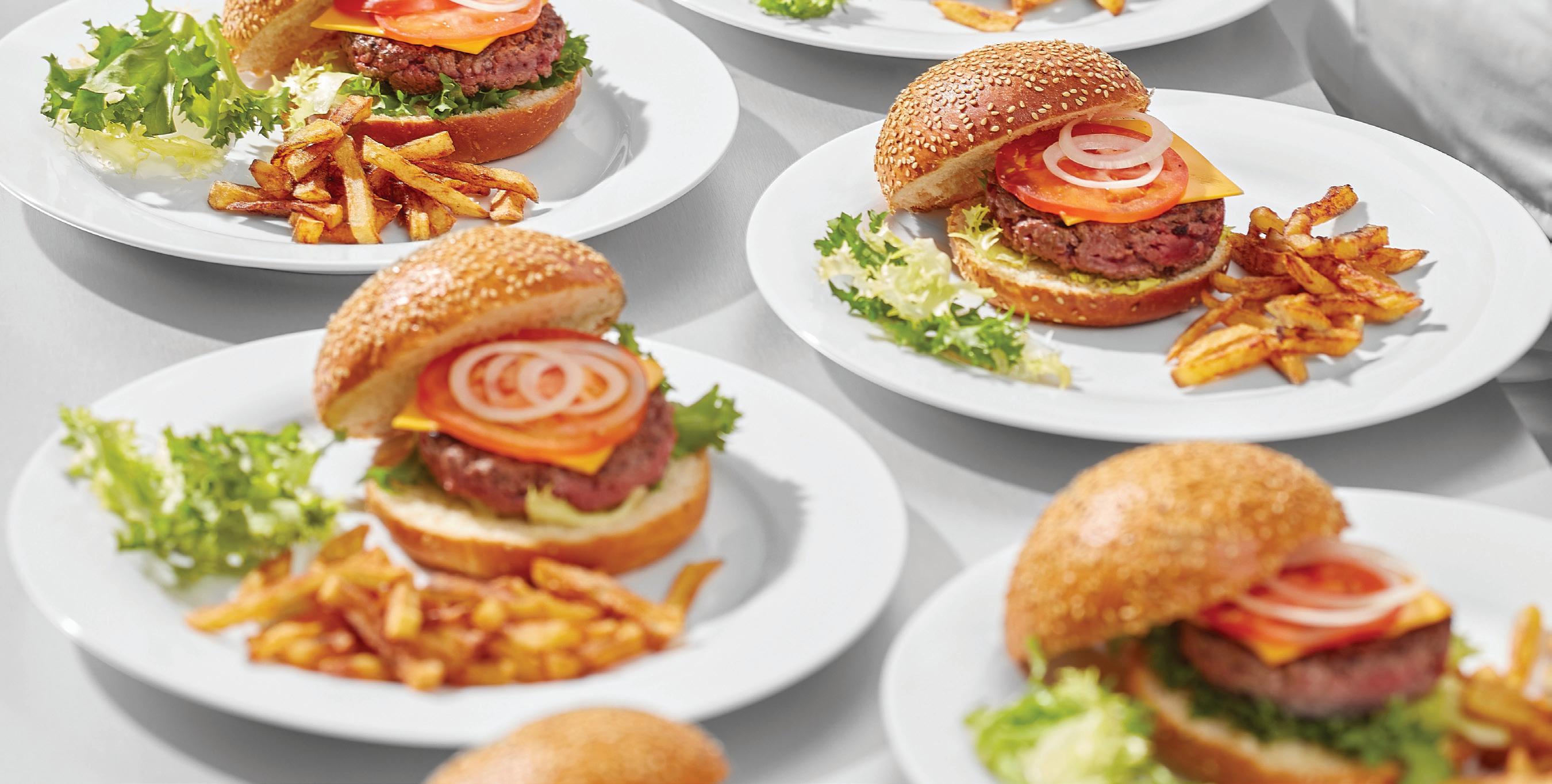



PANERA CHAIRMAN NIREN CHAUDHARY doesn’t mince words when it comes to sustainability.
The restaurant industry veteran calls climate change one of the biggest challenges humanity faces, and he’s far from the only one. Earlier this year, United Nations scientists said the planet is warming at such a rapid rate that it may cause irreversible harm. The group referred to it as a “final warning.” Meanwhile, greenhouse gases are at an all-time high, ocean levels are rising, deserts are expanding, and species face extinction.
If food isn’t at the center, it’s close. U.S. restaurants accumulate 22 billion to 33 billion pounds of waste each year, according to FoodPrint, a report aiming to increase awareness of key environmental issues. Roughly 4 to 10 percent of purchased food is wasted before reaching customers. Food systems contribute almost 30 percent of greenhouse gas emissions. But that’s far from the worst part of it.
“We are already late to the party,” Chaudhary says. “It’s an imperative that anybody in the food retail industry must do more to make a contribution.”
Chaudhary doesn’t throw out that call to action lightly. The warning comes from a place of authority and leadership. He’s been with Panera since May 2019, but the fast casual’s penchant for
sustainability dates back to its origin when founder Ron Shaich recognized customers sought more than processed meals. He had the vision of serving food that was both craveable and healthy, without artificial colors, flavors, sweeteners, and preservatives.
In 2022, Worth Magazine listed Panera as one of its Top 10 Most Sustainable Companies. The chain was also on Inc. Magazine’s 20 Most Purpose-Driven Brands of 2022, alongside the likes of Google, Clorox, Patagonia, and REI. Panera was the only restaurant on the list.
The reason why Chaudhary is inspired to work at Panera is that there’s a strong convergence of what appeals to him personally and what the brand stands for. The chain’s purpose is to make the world healthier and happier, and it looks to achieve this objective through an impact agenda that covers food beliefs, community, and a commitment to inclusivity.
The chairman believes his C-suite position is a privilege and that leaders must be force multipliers of good. Sustainability is a moral imperative, nothing less. To Chaudhary, everyone needs to do more to help the world. Even Panera—for all it’s done in the past few decades—has room to be better.
“I think that captures everything,” Chaudhary says. “That was the notion with which the founder created the brand many years ago.
Since its founding, Panera has pushed itself to take care of the environment—with one big climate goal after the other.
/ BY BEN COLEY
As we move forward, we have carried the torch with a deep sense of responsibility of wanting to continue to elevate good eating.
“Having a broader impact as a leader at this time in the economy, in the world, I think is massively important.”
Sara Burnett, who serves as Panera’s vice president of food beliefs, sustainability, and public relations, understands sustainability through several definitions.
The executive could give a technical, academic answer— which would likely be on par with her. But she simplifies it to how the fast casual can have a positive impact for people, planet, and communities in any decision it makes. Burnett emphasizes that sustainability is a much higher level than just a recyclable piece of packaging.
“That’s how we need to think about it and hold it if we really want to make long-term systemic change,” Burnett says.
Panera has a lot of milestones in this area. Burnett would know best since she’s been with the chain for 18 years. There’s a hallway in the company’s Boston office that showcases accomplishments, and the brand has a rather difficult time fitting everything up there. Some actually have to come down, and that brings Burnett great pride.
Among her nearly two decades of experience, several achievements stand out. The first came in the mid-2000s when Panera moved into the “raised without antibiotics” chicken market and served the product in its Strawberry Poppyseed Salad. It was placed on the menu because focus groups labeled it as the best-tasting chicken. At the time, this type of meat was a small market, so Panera had to build the supply chain. Throughout that process, the team discovered that it was not only the best-tasting chicken, but it also resulted in better animal care standards and had “a very dramatic” public health effect, Burnett says. To this day, the menu item is a fan favorite and the top-selling salad. In fact, now all chicken, turkey, sausage, and ham used on the menu are raised without antibiotics.
In 2016, Panera committed to better welfare standards for broiler chickens. The chain works with animal welfare experts, growers, suppliers, competitors, and other market participants to identify cost-effective solutions. In a few years, it wants to use new broiler breeds recognized as having higher welfare outcomes, provide birds more space, offer improved environments ( better litter, lighting, and enrichment ) , and ensure
birds are rendered unconscious using multi-step controlled atmospheric stunning.

In June 2021, Panera completed its transition to receiving 100 percent of its primary egg supply from cage-free sources. Primary egg supply accounts for about 71 percent of the chain’s total egg sourcing; the plan is to reach 100 percent cage-free eggs across all products by the end of 2025.


“I think that’s when sustainability really pays off—when you recognize you’re delivering for everyone in a positive way,” Burnett says. “I’m very proud of that work, and Panera continues that today. And now in many ways, raised without antibiotics has become more of an industry standard, and especially in retail. I’d like to attribute that to the fact that we pushed, we grew the supply chain, we advocated along with many others.”
Burnett describes Panera’s commitment to clean ingredients as progressive. In 2010, the company became the first national chain to post caloric information on menu boards. A few years later, the chain announced a new food policy aimed at removing artificial additives from the menu in two years. In that time span, the chain reviewed more than 450 ingredients, partnered with more than 300 food vendors, and reformulated 122 ingredients. Burnett says it was an “astronomical feat,” but that Panera pushed through because everyone wanted the food to be nothing less than what they would share with their own families.


Then in October 2020—during the thick of the pandemic nonetheless—Panera revealed that it was partnering with the World Resources Institute (WRI) to label climate-friendly “Cool Food Meals” on its menu. It was the first national restaurant to do so. Similar to how nutritionists recommend a certain number of calories per day, the WRI has a maximum recommended daily carbon footprint for a diet, which is 38 percent smaller than average. The organization’s research shows that this type of diet is necessary to mitigate the worst impacts of climate change by 2030. According to the WRI, a breakfast’s carbon footprint can’t be more than 20 percent of the daily total; for lunch and dinner individually, it’s no more than 30 percent. The other 20 percent is for drinks and snacks.

“People who are environmentally conscious and want to make an appropriate choice, have the convenience of coming into Panera, and through their choice of where they eat and what they eat, they can impact climate,” Chaudhary says.
“… I certainly hope that the industry will also embrace the transparency and the carbon footprint just like they did the caloric value many years back so that it becomes a broader standard and it makes it easy for consumers to be more climate-conscious in the way in which






















































Introducing the QSR Evolution Conference—the ultimate destination for anyone in the quick-service restaurant industry looking to stay ahead of the game.
KEYNOTE SPEAKERS:







Join us for two days of informative sessions, expert speakers, and networking opportunities. Discover the latest industry trends, gain insights into customer behavior, and learn about cutting-edge technology that can help take your business to the next level.



Don't miss out on this exciting opportunity to connect with fellow industry professionals and gain a competitive edge in the ever-changing world of quick-service restaurants. Register now and secure your spot at the QSR Evolution Conference—the must-attend event of the year!


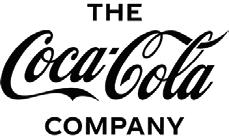





they make their food choices,” he adds.
Panera’s Cool Food Meals—which covers 57 percent of entrées—have a low impact on climate and help guests remain below their carbon limit. Some examples include the Asian Sesame Salad, Chipotle Chicken Avocado Melt Sandwich, Fuji Apple Salad with Chicken, Green Goddess Caprese Melt on Baguette Sandwich, and Steel Cut Oatmeal with Strawberries & Pecans.
The company acknowledges that plant-based foods have a lower impact on the environment, but it reminds customers that they don’t have to be vegan or vegetarian to limit their carbon footprint. If each year, every person in the U.S. ate 10 Chipotle Chicken Avocado Melt sandwiches with chips instead of 10 quarter-pound burgers with fries, it would reduce emissions by 77 million metric tons of carbon dioxide equivalent, according to Panera. That’s equal to removing more than 16 million cars off the road in a year.
“I believe strongly that providing information and nudging guests to decisions that align with their core values but are also better for the planet can be incredibly impactful,” Burnett says. “We need to not only work on the supply side and the work that restaurants and our partners do, but there also needs to be some work on the demand side. And so we want to make sure that we’re being able to influence both.”
For all the sustainable actions Panera has taken over the years, none may be more aggressive than its goal to be climate positive by 2050. That means the fast casual wants to take away more carbon from the environment than it emits.
The company said reaching this objective equates to removing roughly 2.4 million metric tons of carbon dioxide equivalents each year compared to its 2019 greenhouse gas baseline. For perspective, that’s the same as the amount of carbon sequestered by 2.96 million acres of forest per year, an area 14 times the size of New York City. This is a plan that touches the sustainability team, as well as culinary, supply chain, human resources, and other departments.
“When we think about our bold climate goal of becoming climate positive by 2050, while, yes that’s a lot of years away, there’s a lot of work to be done,” Burnett says. “So when you think about our carbon footprint, over 90 percent of it is in our supply chain and value chain. So a lot of the work that we’re doing over the years ahead is working with our partners and working on agricultural practices in the field to distribution networks and how to shorten them.”
The brand has a host of projects planned, but Burnett says the number one challenge for any sustainability professional is breaking everything into parts and not “trying to boil the ocean.”
Panera is setting science-based targets, which Burnett says is the most credible way to measure and set a climate goal. These are things Panera wants to achieve in 10 years, but the company views climate change as too pressing of an issue to wait.
After the chain first released its climate-positive stance in
October 2021, Chaudhary says the peer set agreed with the general intent that neutrality may not be enough. At the same time, they looked at 2050 and immediately asked, “So what are you going to do right here, right now in the near term?” It’s the right question, Chaudhary says. Here’s one answer: Panera has already realized greenhouse gas reductions by investing in more energy-efficient store designs, lighting, HVAC systems, and kitchen equipment. It also decreased fuel use by consolidating deliveries.
“I think there is more curiosity around, ‘OK, tell us specifically what you will do by when,’” the chairman says. “And realistically, I think people are able to wrap their heads around nearer-term milestones. What are you going to do by 2025? That’s pretty tangible. And then also as we move towards 2050, are you really walking the talk on things that you ought to be doing so that you’re constantly demonstrating through behaviors that this is a serious commitment?”
The chain formulated three specific short-term targets for 2025.
One of these goals centers around transitioning to 100 percent circular packaging. The chain opts for packaging made with recyclable, reusable, and compostable materials. Three years ago, the brand revamped packaging for most of its hot sandwiches, which involved eliminating individual boxes and using a compostable thermal wrap. The switch led to a 60 percent decrease in material use and a package that increased heat retention and portability.
Additionally, Panera moved from a tri-fold napkin to a bifold, which cut 30 percent of raw material needed, but kept functionality. The company lets customers help by providing an “opt-out” option for single-use cutlery in the mobile app, via kiosks, and through third-party delivery. For dine-in guests, Panera uses real plateware and silverware to reduce the use of single-use products.
Another short-term objective is to use renewable electricity for at least 50 percent of company-owned operations. When it comes to this goal specifically, Chaudhary says Panera is constrained by availability and capacity in the U.S., but it’s something the brand is working through.
The third pillar considers the menu. Panera wants to increase the percentage of Cool Food Meals to 60 percent of entrées.
“Those are the projects that we’re very much in the weeds on right now and working toward and making progress on each and every day,” Burnett says.
Chaudhary understands that setting a goal for 2050 comes with the understanding that future leadership will have to take up the mantle and continue what Panera started. But that’s the whole point of making the strategy public—so the company can stay accountable in the coming years. Plus, momentum around sustainability is only getting larger and more important. It’s too much for any significant leader to ignore, let alone Panera.
The chairman says the company doesn’t have all the answers, but it knows sustainability is the right problem to solve and that it has a major role.
“I feel very confident that the foundation of the brand and what makes the brand unique and distinc- [CONTINUED ON PAGE 41]

















The roar of gas-guzzling engines is slowly being replaced by the hum of electric motors. S&P Global Mobility projects that electric vehicles (evs) could make up 40 percent of the country’s total car sales by 2030. Even more optimistic forecasts suggest that number could climb to over 50 percent.
With such rapid expansion in the EV market, the number of public charging stations will need to increase drastically to meet demand. S&P Global Mobility estimates the current number of chargers will need to grow by more than eightfold over the next six years.
According to federal data, there are more than 3 million EVs on the road and over 130,000 public charging stations across the country. The White House wants to grow the number of chargers to more than 500,000 via the National Electric Vehicle Infrastructure program (nevi), a $5 billion initiative aimed at creating an accessible and convenient coast-to-coast charging network by 2030. That’s where quick-service restaurants enter the picture.
“Unlike when you pull up to a gas station, where it takes five minutes to fill up your tank, EV charging takes more time,” says Abby Risner, an attorney at Greensfelder who works with clients in both
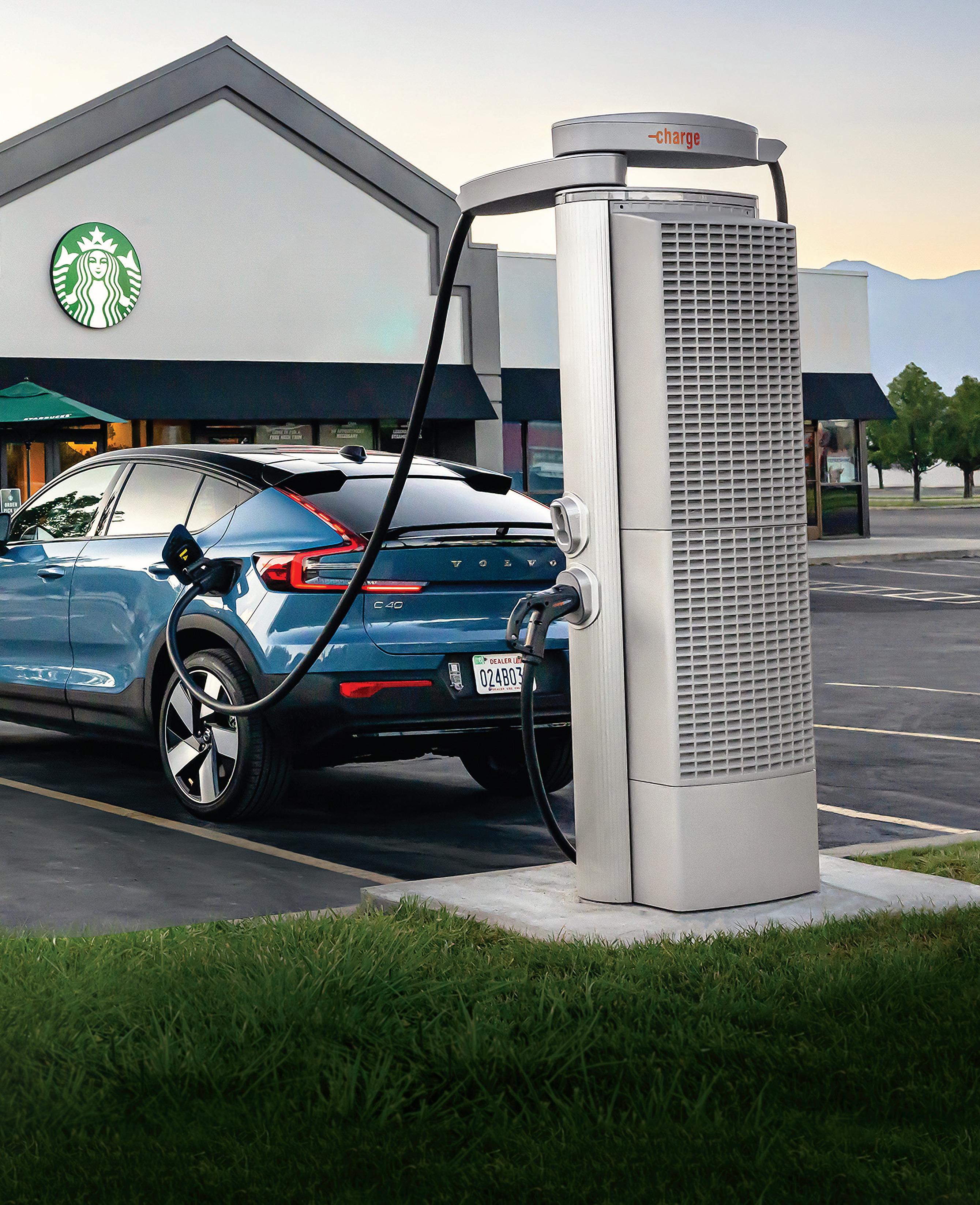
the energy and franchising industries. “It’s a great opportunity for restaurants in particular to integrate an additional offer for their customers.”
With more than 20,000 restaurants across the country, Subway is the largest chain in the U.S. by store count. Chief operating and insights officer Mike Kappit says the brand can use its “unmatched footprint” to help grow the country’s charging infrastructure. That’s why the sandwich chain is teaming up with GenZ EV Solutions and Red E Charging to build Subway Oasis charging parks.
“Our partnership will elevate the EV driver experience by offering canopies with several EV charging ports, picnic tables, restrooms, Wi-Fi, playgrounds, and green spaces,” Kappit says. “The project is designed to offer added convenience for our on-the-go guests while doing good for the planet and generating incremental revenue for franchisees.”
To kick things off, Subway is working with its partners to install smaller charging stations this year. Those initial sites will feature fast chargers that provide a 120-mile charge in under 20 minutes for around $20.
“The pilot phase of the rollout will include smaller-format, fast-charging stations at select new or newly remodeled restaurants,” Kappit says.
As an incentive for guests to plug in, Subway will offer dedicated promotions that are only available while utilizing the chargers. It plans to use insights from the pilot locations to shape its strategy for building out larger, more ambitious charging parks going forward.
“We are working closely with GenZ EV Solutions to determine the right format and number of locations for the Subway EV Charging Oasis parks, using research and guest insights, as well as considering the expected timeline for development based on market conditions,” Kappit says. “Funding of the charging parks will vary per location and franchisee.”
Following the launch of an “eco-restaurant” model a decade ago, the move into EV charging is one of Subway’s biggest sustainability initiatives to date. It comes on the heels of a multiyear transformation journey that includes a focus on menu innovation, modernization of restaurants, and improvements to the overall guest experience.
“As part of our journey to be better, we’re taking a fresh look at how we make an impact on the world around us,” Kappit says. “As a global company, sustainability is important to our brand and we’re committed to developing innovative solutions that will result in better living, better businesses, and a better planet.”
The idea that chargers ought to be located in places where
people are likely to gather is an intuitive one. In practice, though, many chargers have been placed in remote parking lots or seemingly arbitrary locations. As EV adoption grows, charging will need to blend seamlessly with how consumers already live their lives, says Rebecca Wolkoff, co-founder and chief technical officer of ChargeNet Stations, a fast-charging station development and software startup. The company is working with Diversified Restaurant Group, a franchisee operating more than 300 Taco Bell and Arby’s locations, to install chargers at Taco Bell stores in California.
“It’s all about offering convenience and making ultra-fast charging available to everyone everywhere,” Wolkoff says. “More than 84 million people eat at quick-serve restaurants every day in the U.S. We want to go where the people are. Both quick-serve restaurant patrons and EV drivers appreciate convenience, quality, and value. With this partnership, we each provide that to our customers.”
Diversified Restaurant Group unveiled its first “electrified” Taco Bell store in South San Francisco last fall, and it’s working with ChargeNet Stations to install chargers at more than 100 additional restaurants throughout the Golden State. The sites pair ChargeNet’s software with fast-charging hardware from Tritium, an Australian EV charger manufacturer, which recently opened a factory in Tennessee that is capable of producing up to 30,000 Buy-America charger units annually.

“The technology is compatible with all EV connector types and offers, on average, a 100-mile charge in 15 minutes or fewer, for around $10,” Wolkoff says.
ChargeNet Stations is working with Diversified Restaurant Group to ensure a sizable portion of the charging stations are located “in and around underserved communities,” she says. That’s important for expanding access to charging where it is most needed in anticipation of cheaper and more widespread EV use in the future.

“We know there will be many people who don’t have access to convenient at-home charging, especially ultra-fast charging,” Wolkoff says.
Starbucks also is bringing much-needed infrastructure to underserved communities with its nascent charging network. The coffee giant last year teamed up with Volvo and the EV infrastructure company ChargePoint to install charging stations at its parking lots along a 1,350-mile route from Denver to Seattle. The thoroughfare passes through five states and several federal economic opportunity zones that are lacking in accessible public chargers.



The pilot program encompasses 60 DC fast chargers at 15 locations and is expected to be completed this summer. Starbucks will evaluate usage rates to decide if it wants to expand the service nationally as part of its broader goal to bolster renewable energy initiatives and cut its carbon footprint in half by 2030.
Like Subway and Diversified Restaurant Group, Starbucks is working with its partners to install direct current (dc) fast chargers. Those types of chargers are capable of charging an EV to 80 percent in well under an hour. They’re significantly quicker than Level 2 alternating current (ac) chargers, the other option that is commonly used in commercial applications, which take several hours to deliver a charge and is better suited for locations where drivers will remain parked for longer periods, like office buildings and hotels.
“The DC fast charger is the experience that you need for a quick-service restaurant,” says Alex Urist, director of business development at XCharge North America, a provider of smart grid and EV infrastructure solutions. “A Level 2 charger is not going to cut it, because you’re not going to charge nearly enough of your battery. Unless it’s an emergency situation, nobody is going to post up at a fast-food restaurant for three hours.”
The biggest hindrance preventing more restaurant operators from getting into the EV charging game is electrical service capacity. DC fast chargers typically require inputs of 480 volts and can’t be easily installed on the existing 208-volt service found in most quick-service locations.
“It’s not that you can’t get the service upgrade, because you certainly can,” Urist says. “But the cost of that upgrade is probably going to be far more than it’s worth and the revenue that you generate.”
Volvo and ChargePoint are overseeing the installation of charging stations at Starbucks stores, and they’re managing the complicated task of coordinating with local utilities to establish new electrical infrastructure.
Many EV charging stations, like those being built at Diversified Restaurant Group’s Taco Bell stores in California, feature solar panels and energy storage solutions that offset demand on the grid. ChargeNet says franchisees don’t need to make any utility service upgrades, except one additional meter needed to support the chargers. In fact, the company says operators can save up to 40 percent on their restaurants’ electricity by consuming the energy produced by the solar panels and stored in the battery system.
XCharge North America developed a DC fast charger that can be installed on a restaurant’s existing 208 service, enabling businesses to offer a fast-charging experience without bringing additional power to the site.
“Restaurants generally have a buffer on their capacity that would accommodate for at least one if not two chargers, thus making it so that there wouldn’t be significant infrastructure work necessary in order to get these into the ground,” Urist says. “It doesn’t have to be this charging oasis with 12 chargers in one block. I think the way to go about it is to think efficiently about what electrical service we have currently, and just plug a hole and fill a need across a web of assets.”
The cost for DC fast-charging hardware in the U.S. ranges
from $28,000 to $140,000 per charger, according to 2019 estimates from the International Council on Clean Transportation. Depending on charger power and number of installed chargers per site, installation costs span $17,000 to $65,000.
An abundance of government incentives significantly lowers the cost of entry for businesses looking to help build up the country’s charging infrastructure. The Biden Administration has earmarked billions of dollars to facilitate the installation of public chargers, and tax credits are available to offset 30 percent of total project fees up to $100,000. Nearly every state and many utilities are encouraging commercial EV charging with rebates and grants, too.
ChargeNet Stations’ business model requires no investment from restaurant operators. The partnership with Diversified Restaurant Group leverages funding from several state incentive programs, so the franchisee pays nothing up front but still takes a cut of the revenue generated from the chargers.
Common pricing structures include by kilowatt-hour, by session, by length of time, or through a subscription. There are a number of different pricing models across charging network providers, including pricing for members versus non-members, site-host-specific pricing, and pricing based on rate of charge. There’s also user-specific pricing, like the model used at Starbucks, which offers free charging for Volvo drivers.
“The profitability question is one thing I’ve really wrestled with as we advise our clients on some of these issues,” Risner says. “It’s not difficult to see that in the very near future, some businesses will likely see an advantage of pulling customers to use the goods or services they were originally providing by allowing people to use the EV chargers for free.”
Today’s EV drivers may not push back on paying for the convenience of charging their car while filling up on a sandwich or a burrito, but there’s no guarantee that won’t change as more brands get into the EV charging game. More than a quarter of public charging already is free to use, according to the U.S. Department of Energy.
“Your profitability analysis shifts if it becomes a business value add-on,” Risner says. “I’m not hearing a lot of that conversation right now, but I really think it’s one that needs to be had. Are we going to be switching to an environment where most EV chargers don’t cost anything? That’s going to force you to reevaluate how profitable it is for your business.”
From car models to charging equipment to consumer expectations around the experience of being an EV driver, the wheels of change are turning fast. Risner says that creates both opportunities and challenges for restaurants looking to play a part in the green revolution.
“Whether it’s the lease for the equipment itself, your franchise agreements, the pricing structure, or whatever contractual relationships you have, make sure they account for the fact that this transition is going to develop quickly,” Risner says. “You’ll have to be willing to adapt as the space continues to develop, but I don’t know if that’s a reason to stay out of it, because then you may miss out on the opportunity.”




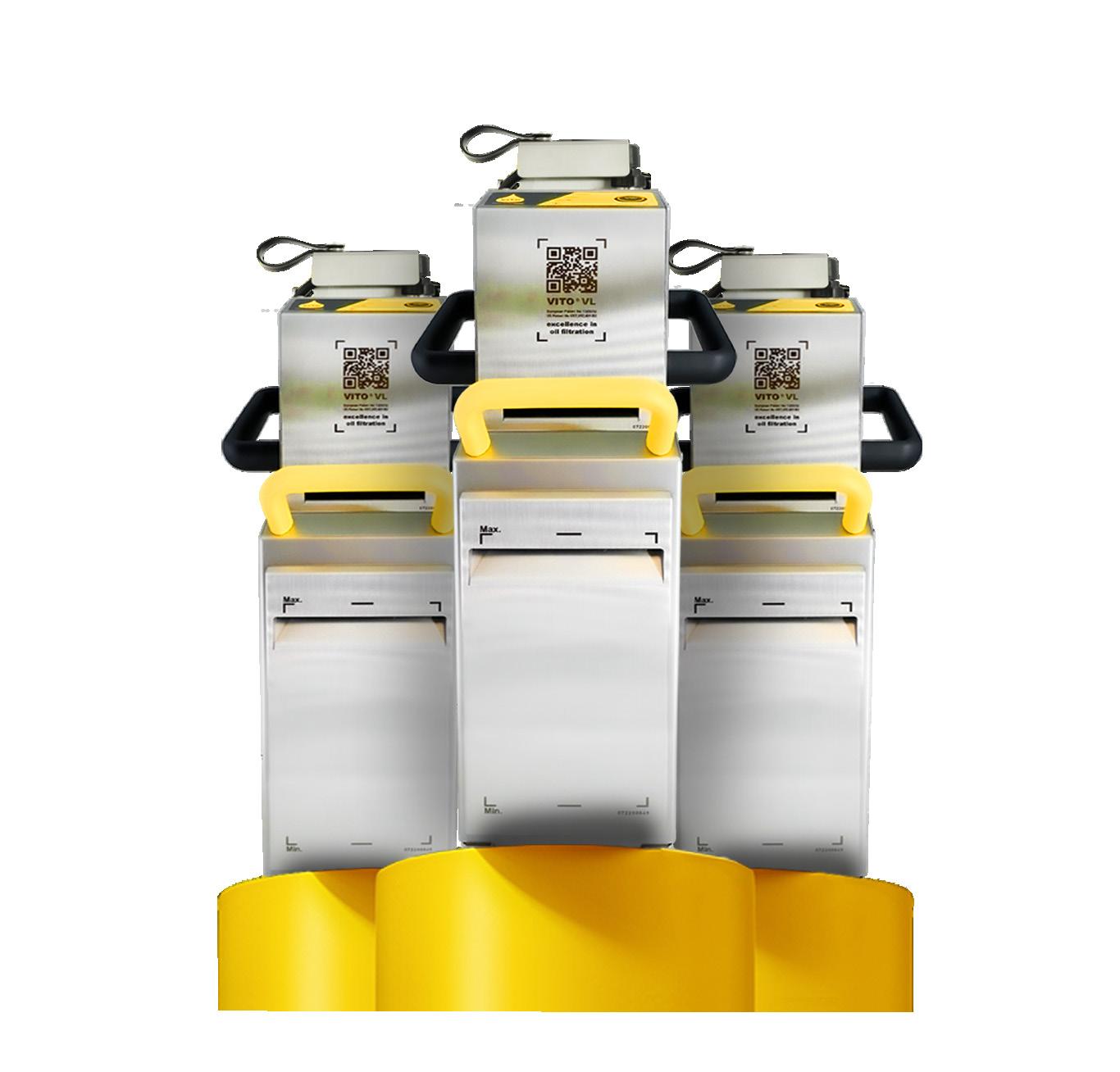
are making change by incorporating energy efficiency into operations.
 BY AMANDA BALTAZAR
BY AMANDA BALTAZAR
A GROWING NUMBER OF RESTAURANTS ARE JOINING THE FIGHT AGAINST CLIMATE CHANGE, including the formulation of environmentally friendly prototypes.
In April, Chipotle announced a new all-electric restaurant design, with intentions to maximize energy efficiency and use 100 percent renewable energy from wind and solar power.
The brand has opened two locations with the new design and a third will open in late summer. Next year the Newport Beach, California-based chain plans to open 100 all-electric locations, and “depending on the success of these in 2024, we expect the number of all-electric locations to continue to grow as a part of our wider carbon reduction strategy,” says Lisa Shibata, Chipotle’s director of sustainability.
The new design will further Chipotle’s progress toward reducing greenhouse gas emissions in half by 2030 compared to 2019.

The new restaurants feature solar panels, where possible, which provide a portion of their power. Inside, all kitchen equipment is electric, and heat pumps provide heat and cooling. The company installed energy management systems, a smaller electric cookline, and improved exhaust hoods. Chipotle also learned to adjust the set points for the HVAC units as needed for seasonality. “In 2022, we saved approximately 65,000 MWh of energy through energy management systems in our restaurants; this is enough energy to power over 6,100 homes in a year,” Shibata says.
Like Chipotle, Amy’s Drive Thru is recognized for its environmental stewardship. The company, which has a CPG arm, Amy’s Kitchen, has four restaurants close to San Francisco (one in the airport) and has plans for 17 new locations on the West Coast.

Amy’s is committed to net zero, which requires sustainability practices to balance the amount of greenhouse gas produced and the amount removed from the atmosphere. The fourth location in Roseville, California, and all others to come, are designed with this goal in mind.
The company is committed to the renewable energy transition and aims to be powered 100 percent by renewable electricity by 2030. The restaurants feature solar panels on their roofs, which supply around 10 percent of the required energy. All future stores will have solar panels, as well.
For remaining energy needs, Amy’s avoids purchasing renewable energy certificates or carbon credits and is intentional about procuring only “additional” renewable energy that directly brings new wind and solar assets onto the grid.
Amy’s also keeps energy usage down by using reclaimed materials as much as possible in its restaurant design. “Beyond the warm look that matches the feel of our spaces, using reclaimed wood and metal components helps keep those materials out of landfills,” says Renaud des Rosiers, Amy’s director of sustainability. “It also decreases the embodied greenhouse gas impact of our restaurants by reducing the need for newly manufactured components and the extraction, manufacturing, and energy use that goes with it.”
Sourcing reclaimed materials can be difficult, however. Amy’s searches through junk yards and reused lots. “There’s this cottage industry of reuse-oriented work yards,” he says. “There’s not a conventional supply chain. It’s almost case-by-case.”
Amy’s used reclaimed materials in a wood facade at the ordering station of the newest location—which opened this May in Thousand Oaks, California—and more frequently for table bases, often using axels and parts of wheels. “It can be challenging to find things that fit, tables that are the right shape and maintain cleanliness and we love to do it a way that brings some flair,” des Rosiers says.
Amy’s also provides electric car charging stations, as does Chipotle.
Last year the company was part of the inaugural cohort of the Gigaton Power Purchase Agreement, which includes Amy’s Kitchen and Amy’s Drive Thru. The company will buy renewable energy from Ørsted’s Sunflower Wind Farm in Marion County, Kansas.
The Gigaton Agreement was created as part of Walmart’s renewable energy accelerator, which allowed five companies, including Amy’s, to get together as a group to reduce or avoid one gigaton of emissions from Walmart’s supply chain by 2030.
“We feel really good about that because it sets the precedent for other small companies to bring renewable online,” says des Rosiers, who expects this to be running by October. “It will be a large component of our energy portfolio, and we’ll continue to source more renewables in coming years.”
Legacy restaurants aren’t being left behind. Wendy’s has 10 company-owned restaurants in Florida that are powered by renewable energy. It expects to have another 22 by the end of this year and 35 more in 2025.
The restaurants are all in Central Florida and are sourcing renewable energy from Duke Energy Florida’s Clean Energy Connection program, a community solar offering.
“The solar facility was being built [ by Duke Energy] and we
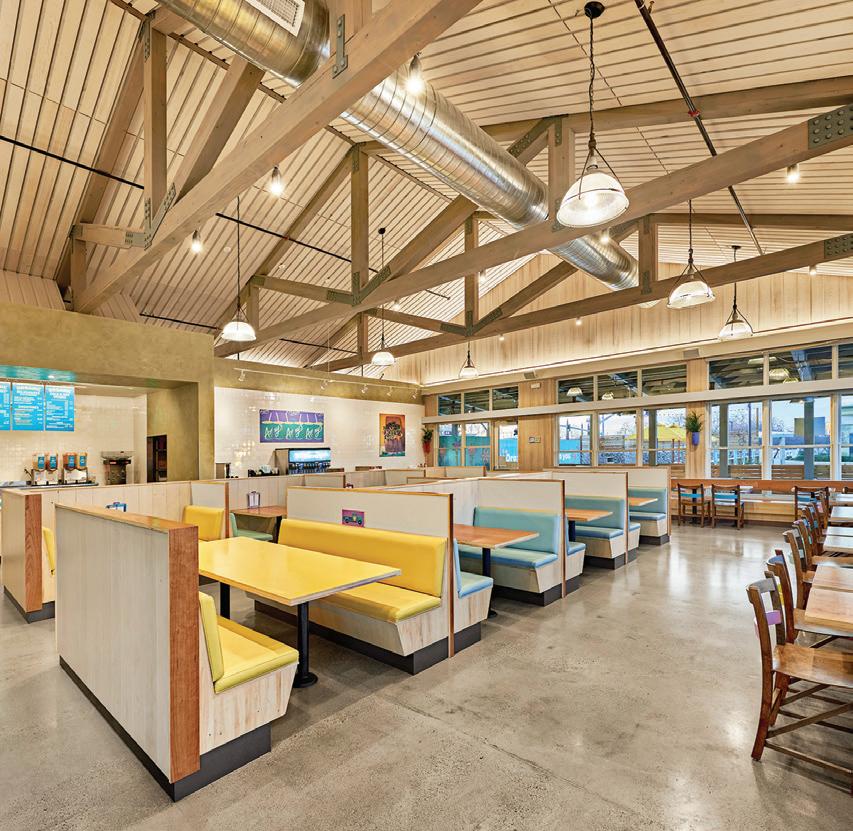





raised our hand early to be part of this,” says Liliana Esposito, Wendy’s chief corporate affairs and sustainability officer. By the end of last year, when just seven restaurants were working with Duke, Wendy’s was sourcing 1,274 kilowatts (kw) of clean energy from the program; by 2025 it expects that to increase to 6,363 kW.
Wendy’s deliberately signed with Duke Energy in an area that had a lot of company-owned restaurants. “We see the company’s footprint as an important part of our business model,” Esposito explains. “It keeps us grounded and makes sure we’re operating restaurants in the way the franchisees are operating restaurants.” This program has the potential to expand to franchisees, she adds.
Moving toward renewable energy “has been a multi-year program,” Esposito says. This started in 2015 when Wendy’s joined the Department of Energy’s Better Buildings Challenge, which encourages businesses to commit to improving building energy efficiency by 20 percent or more over 10 years and to share their strategies and results.
“We were looking at opportunities to be more energy efficient, which saves costs and is really impactful to the restaurants’ operating expenses ... and it has a real tangible benefit,” says Esposito.
Using renewable energy to power a restaurant is a positive thing, but Michael Oshman, founder of the Green Restaurant Association, says there are other things operators can do to keep energy usage down.
• Perform frequent maintenance on equipment to ensure equipment runs as efficiently as possible. A dirty filter, for example, forces a piece of equipment to work harder and use more energy.
• Place things in the right places, such as the right faucet aerators. “If you want to fill up a pot, you want the water to run as fast as possible, but when you wash your hands you want less,” Oshman says.
• Modify behaviors. Don’t thaw frozen foods under running hot water, for example.
• Switch to LED lighting.
• Incorporate energy management systems. They monitor how a restaurant uses energy. “They can tell you if your door is open on your freezer or you consumed a lot of energy on Tuesday but you don’t normally do that,” Oshman says. “It gives you eyes on what you’re doing.”
• Rent your equipment instead of buying it. This way the company you lease from will provide the most efficient equipment, and you’ll both not pay a huge upfront cost of it, and spend less on your energy bill. The leasing company also maintains the equipment and will do a good job of it, Oshman says, “because they want this equipment to last as long as possible.”
• Buy the most efficient equipment you can. “Such a huge cost comes from the energy consumed that it’s generally advised to get the most energy-efficient piece of equipment and maintain it,” Oshman advises. “Don’t just get Energy Star, go for the highest level of Energy Star.”
Being part of the Better Buildings Challenge, Wendy’s was able to compare its restaurants. “There shouldn’t be wide variations in their energy use, so we can collect data and identify efficiencies,” she explains.
Because of what it’s learned, Wendy’s has installed energy management systems and more efficient equipment in many locations, like automated ware washing machines that reduce water used per dishwashing cycle by 47 percent. It has also added LED lighting in restaurants and parking lots. “It’s about keeping good track of what you’re using. If you look at your electricity bill and compare with other households in the neighborhood, you might see there’s something you could be doing better,” Esposito says.
This fall Wendy’s will open its first Global Next Gen restaurant. This design has about 10 percent energy savings
compared to its former most energy-efficient model. Restaurants built with this prototype will use more efficient building elements (i.e. lighting and HVAC) to decrease energy usage and costs. They’re also cheaper to build and operate.
So far Wendy’s hasn’t seen any savings from switching to Duke Energy in the 10 Florida restaurants “but we see that as a longer-term potential,” Esposito says, adding that she expects to see that more after a full year of use. “Ultimately we anticipate there will be a savings but it will also be a more resilient source of energy and has a far more favorable environmental footprint compared to conventional electricity.”
Hannah’s Bretzel is a fast-casual sandwich concept with three locations in Chicago. Along with using 100 percent biodegradable or recyclable packaging, two electric Mini Coopers for deliveries, and in-store composting, the stores are powered by energy from wind and solar companies. Because the stores are all within high-rise buildings, there’s nowhere to place solar panels and this is the next best option, says CEO Florian Pfahler.
He partners with an energy provider to ensure the money he spends on electricity goes to the companies producing wind and energy, except for a small portion that goes to the energy company in the area.
Pfahler has been doing this for 15 years and he pays a premium for it. “We finance their operations and in return we enable them to produce more energy and get an even larger share of the grid,” he says.
“Money is not the only driver. I also want to lead by example,” the CEO adds. “There are a lot of customers who want to see businesses operate this way. I want to support that industry and see solar and wind grow.”
The premium price is worth it, he says, to know he’s doing the right thing and to let customers see that. It not only appeals to guests; it helps attract team members, too.
Pfahler lets consumers know about what he’s doing through prominent signage on the walls and through the company website and social media. “We make it fairly well known,” he points out. “It does influence some people’s decisions about where they eat.”
At the end of the day, it’s a decision that keeps Pfahler feeling better about his operations. “This is a no-brainer. I need to set this business up to contribute positively to the community.”

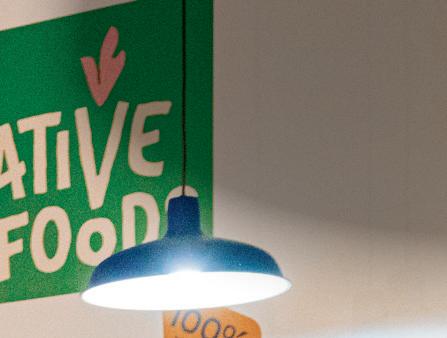 BY SAM DANLEY
BY SAM DANLEY

It also offers produce-centric items centered around cauliflower, potatoes, chickpeas, and more. Sourcing proteins for meat alternatives has been less of a challenge than whole food ingredients. In tandem with the pandemicdriven supply chain strains, a series of failed crops have caused the prices of certain vegetables to skyrocket over the past several years. The effects were felt across the industry, but Thum says they’ve been “particularly challenging” for plant-based brands.
“I’m thinking of a failed cauliflower crop in 2022, large price increases for potatoes or wheat, supply chain issues for sandwich buns, and shortages in just about every area,” she says.
In response to the sourcing disruptions, Native Foods had to learn to be nimble and adapt to ever-changing market conditions in an instant. Communication between departments became more important than ever. As an example, Thum says the marketing team has learned to constantly check in with supply chain and operations when setting up a campaign around a menu release to ensure stores can actually execute what the campaign is promoting.
Native Foods has been serving vegan meals for nearly 30 years. The 11-unit fast-casual chain works with a diverse range of partners to source its goods, from major distributors to smaller, more specialty plant-based players like Before the Butcher and Upton’s Naturals. It also aims to work with local producers whenever possible.

That balanced approach to sourcing proved helpful when navigating supply chain disruptions over the past few years, but the company still faced its fair share of challenges stemming from delays, shortages, and inflation.

“What made them particularly challenging to manage was the unpredictable and sudden nature of some of these effects,” says director of marketing Sandra Thum. “We’re constantly working on new menu ideas to introduce as LTOs or for our seasonal menus, but now we were in a situation where ingredients that were readily available during the R&D process were suddenly impossible to come by. This forced us to switch up our releases on very short notice.”
Native Foods offers menu items featuring everything from dairyfree cheese and butter to meat-free chicken, beef, turkey, and ham.
The supply chain has largely recovered, and commodity inflation has eased throughout 2023, but the company still sees some lingering disruptions, with certain staple ingredients going out of stock or being shortened in select markets.

“While frustrating, we’ve learned to adapt and almost factor these disruptions in,” Thum says. “In a way, this has become our new normal.”
Next Level Burger also takes a balanced approach to sourcing. When founder and CEO Matthew de Gruyter launched the vegan burger chain in 2014, he didn’t just commit to using plant-based ingredients. He also committed to sourcing 100 percent organic and non-GMO ingredients. That meant he had to bootstrap a supply chain across a number of different distributors, from major corporations and mid-sized regional players to hyper-local partners.
“The bad news is that our supply chain looks like virtually no one else’s, and our approach is way more challenging than the burger joint down the street,” de Gruyter says. “The good news is that when the supply chain blew up for 99.9 percent of the country, we were in an enviable position because no one else had been willing to pay what we pay for our products.”







fourth birthday, hosting a week-long series of events, deals, donations, and giveaways. Through the annual Big Day of Giving, Burger Patch donated proceeds from its Blackberry Patch Shakes to local nonprofit Blackberry Creek Farm Animal Sanctuary.
This year, Horn unveiled a sister concept to Burger Patch, hailing from the KIND Lab: Burrito Patch, a fast-casual brand serving 100 percent vegan Mexican dishes. A sneak peek of the menu features burritos, chimichangas, and quesadillas, also known as “patchadillas.”
Burrito Patch is still in the works, but Horn is hopeful that it will be brought to market in the coming months.




“We’ve always envisioned Burger Patch as the gateway to other vegan innovations [ like Burrito Patch],” Horn explains. “We’ve always thought that it would never be just Burger Patch.”

Other examples include seasonal chili and pulled pork alternatives. Horn points to the familiarity of a burger as being the draw for customers who are on the fence.
“We have to get people to take that leap of faith,” Horn says. “We must present people with something savory and delicious. That nostalgic taste gives people the comfort to know that they are doing a good thing by taking the first leap [into plantbased].”
With Burger Patch, Horn has experienced the rises and falls of plant-based trends. He has watched the segment evolve as a young space and is ready for what he calls “the second wave.”
He looks forward to strengthening the nostalgic feel of Burger Patch while catering to a target market that might be searching for more.
“We have this incredible core group of customers who are really into what we do, but they cannot eat a burger every day. So, what else can we do for them?” Horn says. “We want to present something that is still comfortable and familiar but in a different format. That is where we are at as a brand right now.”
of digital products that allows for a technology-forward model. This digitized approach helps Dodo Pizza ensure quality despite quick expansion.
Now, Dodo Pizza has a team of over 200 software engineers who have successfully moved the back of house into the cloud and developed an app, a website, and other customer-facing digital products. According to the Dodo Pizza website, over 90 percent of delivery orders are made through the app and website. In Estonian locations, the app is responsible for 60 percent of revenue.
The company uses technology from R&Digital to adapt to customer preferences. Menu research is done with data from the Dodo Pizza app, measuring things like flavor intensity, temperature, and visual appeal. The process makes it easy for customers to give their feedback in a few clicks and lets the brand customize its offerings to consumer tastes.

Since its inception, Dodo Pizza has grown to 917 company-owned and franchised units in countries like Belarus, Estonia, Germany, Kazakhstan, Poland, the U.K., and the U.S. In 2019, the brand saw $313 million in systemwide sales, a 46 percent increase from 2018.





In 2019, it was named the third fastestgrowing restaurant brand in Europe and the chain continues to be a market leader in both Russia and Kazakhstan. According to the brand’s website, 89 percent of sales in 2019 were generated in Russia, but the brand is eager to put the money toward scaling globally.

For the eco-conscious customer, Ovchinnikov has his eyes on Warsaw, Poland, for the second test market with PIZZcyle boxes. His goal is to fill 100 percent of delivery orders with reusable boxes and to utilize them in every location, but he is keen on gathering a thorough understanding of how it impacts the company’s systematic efficiency.

Dodo Pizza may have reached over 700 locations in only 10 years, but Ovchinnikov has set a goal for 10,000 stores in the future. Additionally, an IPO is planned for the chain in 2024.
He invites fellow sustainability pioneers to join him on a mission of honesty and “good old pizza, done well.”

tive is so closely tied to it being a good social steward,” Chaudhary says. “I’m quite confident that with these goals being publicly committed, that future leaders will also have a similar level of commitment to drive compliance.”
As Panera looks across the global restaurant industry, especially post-pandemic, one unmistakable trend is that consumers care more about what they put into their bodies, Chaudhary says.
“I think we are obviously very credible on that dimension,” Chaudhary says. “Whenever we look at the reasons for which consumers choose us versus our competitors, overwhelmingly, the biggest response is that, ‘We think that Panera is best-inclass in serving food that we feel good about eating. We feel much better after we leave a Panera, having had a meal than we did when we went in because of the quality of the ingredients.’”
According to a 2022 Datassential keynote report, 90 percent of surveyed guests said sustainability, in general, matters to them. Fifty-seven percent said restaurant sustainability practices are “somewhat influencing” their decision to dine out. A little more than 21 percent said they would go out of their way to eat at a sustainable restaurant. Gen Z and millennials expressed a bigger connection to sustainability in comparison to baby boomers.
Chaudhary says it’s also an “established fact” that customers gravitate toward companies that have a clear impact agenda. So do investors and other associates—a majority want to do business with brands that seek a better world.
“There’s no question about it,” the chairman says. “So I do think that it not only is the right thing to do, but it also makes a tremendous amount of business sense.”
The pandemic certainly didn’t stop Panera’s mission. Not even the recent avian influenza outbreak.
“Some of the challenges actually presented us with an opportunity to strengthen and rethink how we were building our supply chain, which actually make us potentially stronger for the future for all those sustainability changes that we have coming in the future,” Burnett says. “Avian influ-
enza destroyed for quite a long time, the egg market. Based off of our suppliers and the strength of our network, we’ve maintained our supply of cage-free eggs throughout the entire pandemic.”
Financially, being climate friendly brings its wins and losses, Burnett says. Panera chooses to think of the long-term return. Some things are investments for the future, like LED lighting, which might be costly upfront, but over time saves money spent on electricity. Systemwide, the company refers to this situation as the power of “and.” How can Panera do well in business and meet its climate goals?
Chaudhary says it’s a constant tightrope. The company will never stray from its food beliefs, but a business model can only move forward if there’s growth. As a result, Panera positions itself as a quality brand that believes in “offering more for a little bit more” concerning how its menu prices compare to quick-service competitors.
“We have to be profitable,” Chaudhary says. “Our investors have to get the appropriate return that they deserve. And if you’re doing that and our sustainable activities are also profitable, only then will they perpetuate. So at Panera, I think our commitment is very much a part of our value equation to our consumers and built into a business model.”
The chief executive believes the company’s sustainable message—to customers, vendors, suppliers, and all stakeholders— can best be summarized by a proverb stating, “We do not inherit the Earth from our ancestors, we borrow it from our children.” Chaudhary finds it compelling as to what the world must do collectively.
That’s how Panera chooses to operate each minute, hour, and day.
“Food is one dimension of it, but also how we show up with our people, the culture that we build, how we embrace diversity, our commitment to giving, talent from underprivileged backgrounds, access to education, and our commitments to planet that we have formalized recently,” Chaudhary says. “That continues that whole theme of being very committed to having a broad impact agenda.
“And I think that is what then shows up as an enhanced reputation for the brand.”
The biggest headaches early on centered around soaring costs for transportation and packaging. In fact, Next Level Burger didn’t see any significant input challenges related to its menu until last year. Like Native Foods, the problems had less to do with meat alternatives than with whole food ingredients.
Warmer weather, a lack of rain, and cloud cover caused by wildfires resulted in a significant decline in potato yields during the 2021 growing season, which translated into a widespread shortage in 2022. The pinch was even tighter for organic potatoes, which already account for a fraction of the potatoes grown in the U.S. In some cases, de Gruyter says he saw an acute and temporary 100 percent increase in organic potato costs.
“For some restaurants, fries are sort of a cheap throwaway that you add to the meal,” he says. “For us, it’s a meaningful part of our input, so when you see organic American fries double in cost, it’s painful to watch.”
A recent study from the consulting firm Simon-Kucher found a majority of U.S. restaurant guests are willing to pay at least 10 percent more for sustainable meals. Younger generations are willing to pay an even higher premium, with half of Gen Z and more than a third of millennials indicating they’d pay up to 20 percent more for sustainable items.
Food waste management and environmentally friendly packaging are the top sustainability attributes restaurants can use to attract eco-conscious consumers, according to the study. Other elements of sustainability that are important to guests include raw material sourcing, resources used in production, and emissions from distribution.
Health remains the primary driver for consumers ordering plant-based options, even as awareness around the environmental impact of meat and dairy consumption grows, says Dave Clement, partner at Simon-Kucher.
Consumers are willing to pay more for healthy choices, and there’s an understanding that the costs to procure and produce plantbased items can be higher, he adds.

What was your very first job? Selling pretzels on the street corners in Philadelphia at age 11.
What’s your favorite cuisine or coffee choice?
Pretzels, obviously. I’ve been on a sushi-kick lately. I’m not sure I want to be honest about how many times a week I eat sushi. Overall, I mostly favor savory cuisine over anything sweet. As I get older, I drink less caffeine and typically stick to a small black coffee from Dunkin’.
Who inspires you as a leader? Steve Nuel—we call him the “Pretzel King”—he truly transformed the pretzel industry and was responsible for giving me my first job. He invested so much of his time in me, teaching me the business; you could tell he really wanted me to succeed.
What’s the best piece of advice that other restaurant executives should hear? Your employees are your key to evolving. Use their feedback and expertise to improve. Also, just because we’ve always done something a certain way, doesn’t mean we have to keep doing things that way.
What are some of your interests outside of work?
Spending time with my kids. I’m a huge movie-buff; I’ll often go to the movies by myself. I love taking spontaneous trips and not telling anyone about them. I love spending time at the beach. Being healthy has always been a huge focus for me, but when I got sick with COVID-19 in March of 2020, I felt I really needed to make my health a priority. Being in a coma for weeks really puts things in perspective.
Not many people know what they want to do from a young age, but I was fortunate to start my entrepreneurial journey at age 11, selling pretzels on Roosevelt Boulevard in Philadelphia. Being from Philly, you’re born loving pretzels, and I grew up eating and selling them. A lot of people don’t know this, but the shape of a Philly pretzel is unlike your typical Bavarian style; instead, it’s a figure-eight-shape that’s intended to be sold in bulk at a wholesale price. This is exactly what all the original pretzel bakeries in Philadelphia did. They opened up early in the morning to produce thousands of pretzels. Sold them across all their wholesale accounts and closed shop for the day by 9 a.m.
It wasn’t until I graduated college that I realized my true love for pretzels and the desire to be my own boss. My job as a stockbroker at the time wasn’t fulfilling, and I often spent my days building this pretzel concept in my head. I eventually partnered with my friend and college roommate,
Len Lehman, to open the original Philly Pretzel Factory location in the Mayfair section of Philadelphia in May of 1998. We thought we’d be able to close at 9 a m that first day, but the line continued to wrap around the block and we didn’t leave until 5 p.m. There were nights we slept on bags of flour for an hour-or-two before prepping product for the next day. Those memories will always be celebrated because it got us to the place we are now.
Today, we have 80 franchised locations in Pennsylvania, with 20-plus stores in Philly, and 140-plus nationwide.
In my eyes, bringing a dozen donuts to the office is a thing of the past. In all our stores, we’ll see people in every industry regularly buying pretzels and bringing them to their clients, to the classroom, to the office meeting, etc. Pretzels are truly embedded in this region. As we continue to grow, it is our goal to enter new states and introduce more people to Philly pretzels.



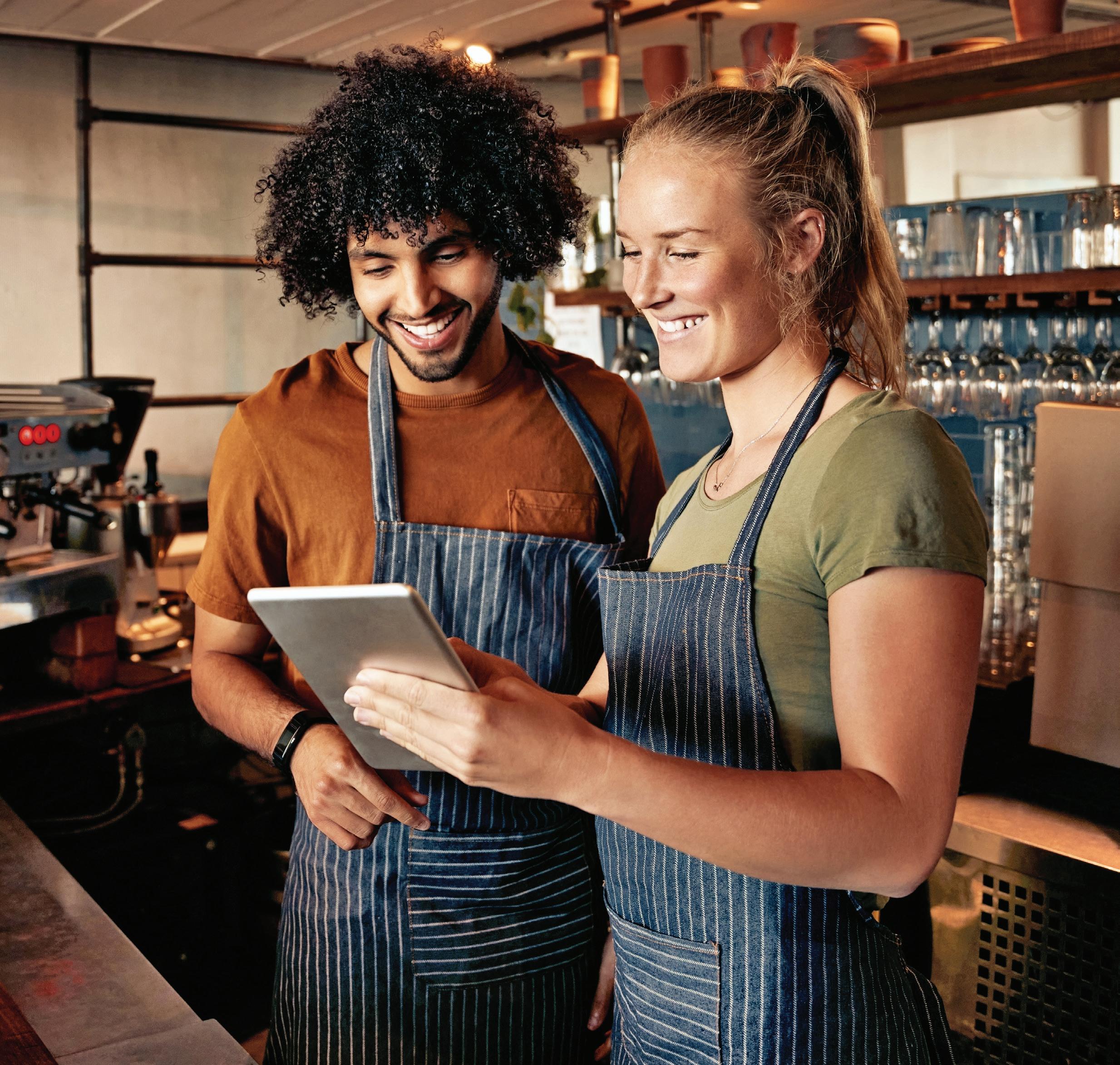
Old wisdom has noted that the restaurant industry was slow to adapt to certain technologies. The digitization of, well, everything was a slow and steady process playing out during the 2000s and 2010s. New equipment, technology, and digital solutions were rolled out fast and furious, all with the aim of helping restaurants become more efficient.

Today’s convenience-driven culture is propelling significant revenue for interactive kiosks. It is an industry expected to nearly double to $45 billion worldwide by 2028, according to Statista.
Customers are embracing self-service technology and the benefits of a faster, easier journey. Two out of every three of them prefer having a frictionless, self-service dining option. It’s easier and, in an era of an ongoing pandemic, it’s safer.
Not only that, there is real, measurable business value in kiosks and self-service: Restaurants witness a 30 percent increase in average check size when creating a frictionless order option. It’s why restaurants Acrelec works with—from McDonald’s to KFC to Dunkin’ and Burger King—choose to accelerate their business through selfservice technologies.

Acrelec’s deep knowledge of the quick-service and fast-casual industry has allowed it to evolve its expertise to the next level and provide leading-edge kiosk solutions. The company’s fully customizable technological advances, wide range of kiosks, and global support infrastructure make the difference and are why global brands have given Acrelec their trust.
Specifically, here are three ways restaurants can up their game with self-service ordering and help drive growth.
With Acrelec’s cloud-based deployment tool, restaurants can deploy apps for integration with all major POS providers. They enable hardware and software for both Acrelec and third-party applications and effortlessly manage device fleets remotely with the power of a cloud-based deployment tool called the ACRELEC Transformation Platform ( atp). Acrelec monitors hardware,
Learn
peripherals, and software operations so restaurants receive alerts even before they realize there’s an issue.
Creating a personalized brand-specific digital ordering solution is a great way to build customer loyalty, increase average check size, and reduce order time. Acrelec’s Product Recommendation Engine harnesses AI to drive growth and better performance with personalized product recommendations. The flexible digital ordering engine enables AB-tested content strategies and UI analytics.
Acrelec uses wireless Bluetooth technology to help restaurant crews easily locate and serve customers when their orders are ready. It reduces downtime and increases customer loyalty. With a simple wireless installation, the fully customizable Acrelec Table Service solution can be quickly put to use to meet the unique needs of a restaurant—all with minimal crew training.
Once online, the system uses complex algorithms fine-tuned over thousands of live implementations to easily find guests, whether they are waiting outdoors or inside. The crew member can then click on the highlighted number on the behind-thescenes monitors to visualize and serve the customer a frictionless experience. Advanced table service technology Acrelec provides reduces customer wait time by 20 seconds per order.
As a one-stop solution, Acrelec makes it easy from start to finish to restaurants looking for technology suites that offer a seamless, efficient self-service experience. Instead of working with multiple suppliers, which can cost time and money, Acrelec is the single source for customers, providing the hardware, software, and service to assist throughout the entire journey. RET
Interactive kiosks help build loyalty and increase revenue.
Restaurants witness a 30 percent increase in average check size when creating a frictionless order option.
Bring operational efficiencies to your restaurant and elevate your self-ordering experience with ACRELEC’s kiosk solutions, equipped with Glory Cash Payment Systems. The industry leader with over 80,000 installations worldwide, ACRELEC’s innovative technology and personalized AI-driven ordering optimizes your customer journey while increasing the average check by up to 30% more
acrelec.com/kiosk | marketing.KIOSK@acrelec.com
Copyright 2021 Acrelec. All rights reserved.

her name, and grabs it. When she gets home, she realizes she grabbed a bag for another Kristen. She doesn’t have time to go back, so she eats the other order, although it’s not what she wanted.
When the other Kristen arrives, she can’t find her order. She gets an employee’s attention and asks why her order isn’t there. The manager is called over, and five minutes later he apologizes and hands her a freshly made order.
Both Kristens had bad experiences, but the manager has no idea what actually happened. Was it an honest mistake or theft? Did a thirdparty delivery driver take it? Without data to answer those questions, the restaurant will continue to face unhappy customers, expensive remakes, higher food costs, and lost productivity for employees. These pickup problems often happen three or four times a day, costing operators hundreds of dollars a week.
ordering
stay. Customers love the speed, convenience, and control it gives them, and when it’s a good experience, they come back often.
Of course, restaurants have invested heavily to improve the digital order journey. They’ve built efficient make lines supported by tech stacks that optimize employee efficiency and provide data for measurement and optimization.
However, the moment a digital order is placed on a pickup shelf, efficiency ends, and the restaurant loses all visibility of that order. It can be picked up by the wrong customer, left sitting for hours, or stolen.
Most order pickup problems are accidental. For instance, a customer named Kristen comes to the pickup shelf, sees a bag with
There’s an easy fix. By replacing their pickup shelves with OrderHQ Smart Food Lockers, restaurants eliminate unauthorized order pickups and gain data for order pickup that creates a digital chain of custody for each order. Now they know when the order was placed in the locker, how long it waited there, who picked it up, and at what time.
Employees increase throughput and unauthorized pickups are eliminated, saving hundreds of dollars a week in remakes and chargebacks.
Customers now know pickup will be fast and reliable, so they choose to order from the brand’s app, reducing delivery service provider fees for the operator.
The brand also gets new accountability with an end-to-end digital chain of custody for every order at every store in its portfolio. They can use this to verify delivery service times and negotiate rates based on data, not guesswork.

Find out how OrderHQ Smart Food Lockers complete the tech stack and ensure every customer experience is a great one. RET
To learn more, visit apexorderpickup.com.















Many Americans and business owners are experiencing inflation due to the pandemic and other external factors. The unpredictability of the cost of goods has driven a series of menu changes across the restaurant industry, forcing brands to consider the hardware that has traditionally displayed pricing.
One effective solution for these challenges is implementing hybrid menuboards. This type of board combines digital and static displays, offering more customizable options for managing content across multiple locations.

Hybrid menuboards provide many advantages for restaurant owners during times of uncertainty. First, they offer the flexibility to quickly change even the most minor of details on a menuboard Secondly, for those brands managing multiple locations, content management systems can simultaneously update multiple digital menuboards at once without any additional labor costs. For example, if a product price increases due to inflation or a seasonal special-needs promotion, digital portions of the board can be changed quickly and easily.
Additionally, hybrid menuboards provide an aesthetically pleasing display that attracts customers while allowing new items or specials to be added without taking up additional space. Restaurant owners also control how they display their products and services when using hybrid menuboards.
Digital components can include custom visuals such as videos or graphics and text descriptions to highlight features or

benefits of certain menu items. By having more control over how items are presented on their boards, restaurants can ensure that their menus accurately reflect their brand identity while drawing attention to various offerings. They also allow restaurant owners to create different designs for each location to have a unique look that resonates with customers in each area.

The transition to hybrid menuboards may seem intimidating to some operators, especially those who worry about durability and weather compatibility. However, partnering with the right provider can equate to weather-tempered options as reliable as traditional, static menuboards.

Equipped with LED screens engineered to withstand extreme temperatures, these monitors can operate 24 hours a day, seven days a week without concerns of damage or malfunctions—even in the harshest conditions. This helps reduce maintenance costs and largely eliminates the need for costly repairs originating from extreme environmental exposure.
Hybrid menuboards are effective tools for restaurant owners as they work through periods of inflation by providing flexible and customizable solutions for updating prices and displays across multiple locations quickly and easily. As more restaurants turn toward technology-driven solutions, it’s clear that hybrid systems will play a bigger role in the industry moving forward so that businesses not only remain competitive, but also endure the financial challenges posed by unpredictable external causes. RET
To learn more, visit www.dsasignage.com.





























From the pandemic to labor shortages, inflationary input prices, and a potential recession, it seems that the restaurant industry is under constant attack. While riding the storm out is the only solution for most of these issues, some restauranteurs are finding that operational efficiency is one area they can control and leverage to their advantage.

An often-overlooked cost in the restaurant industry is the inefficiency of standard tank-type water heaters. A mostly unchanged technology over the past half century, these units are not only inefficient from an operational viewpoint, but they also demand valuable floor space and have a relatively short lifespan. Imagine if you could repurpose half the space taken by your current water heaters while saving more than 40 percent of your present energy costs—all without losing any of the hot water capacity of your existing system. These are the benefits experienced by many restaurant systems that specify Intellihot as a preferred vendor.
Intellihot, a leading innovator in the commercial tankless water heater industry, designs and builds equipment specifically for the high demands of restaurants and commercial applications. The company’s water heaters are engineered for a quick “drop-in” replacement of existing systems. Moreover, through an innovative program, Intellihot will guarantee the sizing of its units so they can meet the demands of restaurants. Otherwise, it will upsize the water heater at no additional cost. In fact, five different sizing calculators are provided on the company’s website to assist in selecting

among its 12 heater sizes.



Typically, restaurants size a tanked unit for their needs and then install a duplicate tanked unit as back-up. Intellihot eliminates this need by engineering redundant heat engines within their water heaters. So, if a heat engine has to be taken offline for maintenance, other engines will seamlessly make up the needed capacity with no need for the cost, space, and maintenance of a second system.
Finally, if future-proofing a business with a tankless electric water heater is important to a restaurant, Intellihot released the world’s first tankless heat pump water heater for commercial use. Called the Electron series, this innovative product absorbs energy from ambient air to heat water. For restaurants that install the Electron in or near their kitchen, this can have an additional space-cooling benefit.
The Electron Series presents a compact, tankless option that can meet compliance-related challenges of recent efforts in banning natural gas in commercial buildings. These units can also be monitored remotely over a cellular network to monitor their life and schedule maintenance in advance to avoid downtime. They offer built-in factory monitoring capabilities, which use AI to consume electricity in off-peak hours and save energy costs. They can also make use of solar power using optional attachments. RET





To learn more, visit intellihot.com.

Cost Effective, for both capital and operational expenses bring CFO's on board.

Clean, near zero GWP with no fossil fuels, more than satisfies regulators.
Reliable, on demand hot water with backup eases the minds of facility managers.
Easy, installation and remote monitoring make contractors big believers.




Safe, tankless heating defends users against Legionella


Scalability and built-in redundancy fit the plans of engineers.
See how it works
As consumers have pulled back on restaurant spending and experts continue to warn of a recession later this year, restaurants must look for ways to tighten operations to help tide them over until markets settle.
One often overlooked process in the search for cost and labor savings is cash management. Restaurant operators frequently underestimate the time and labor commitment they’re making to cash handling. From counting and recounting to depositing, reconciling, and delivering cash to the bank, it adds up quickly.
It may be time for restaurant operators to re-evaluate how they manage cash handling, says Lenny Evansek, senior vice president of SafePoint business development at Loomis.
“On-site store observations comparing what is actually happening in the restaurant versus the standard operating procedure, which can reveal many inefficiencies which can be corrected by implementing an automated and standard way of handling and depositing cash,” Evansek says.
In fact, manual cash management can gobble up more resources than necessary because manual cash counting can lead to increased cash discrepancies, shortages, and errors. Additionally, when cash is openly handled and vulnerable, there is increased security risk. That’s because cash is inherently untraceable, leading to higher internal theft risk, and creating a target for external robbery or burglary, potentially putting customers and employees in harm’s way. Finally, since employees need to arrive early and stay late for manual cash handling tasks, labor costs increase. In addition, supervisors must take time away from other revenue-generating responsibilities to oversee cash handling and visit the bank if needed.
Instead, when a restaurant switches to automation technology and begins a new cash handling process, they reduce the risks, costs, and errors considerably.
“Operators that choose an automated way to handle and deposit cash can count on time and money savings from eliminating or reducing bank trips, deposit prep, drawer reconciliation, and benefits within corporate treasury, accounting, and loss prevention,” Evansek says.
That can add up to a significant portion of operating expenses over time. In fact, a case study conducted by Loomis found that restaurants can save more than 30 hours per month in labor and another $50–$100 in bank depository and change order fees by automating cash management.

So, even as inflation cools and consumer spending bounces back, labor costs and inefficiencies will likely remain ongoing challenges to profitability. A pro-active restaurant operator can build capacity for operational savings by eliminating manual cash handling and installing smart safe and cash recycling solutions instead.
To learn more and download Loomis’s Ultimate Guide to Restaurant Cash Handling, visit loomis.us/restaurant-guide. RET
To learn more, visit loomis.us/restaurant-guide.

Cash handling can be a huge time and labor commitment – something restaurant operators don’t have enough of. SafePoint is comprised of smart safe technology, change order management, armored transportation, and our customer reporting platform, and is designed to make your in-store cash handling quick and easy. Leave it to the pros!

download the Ultimate guide for restaurant Cash Handling

Everything you need to know to increase efficiency, mitigate risk, and reduce costs associated with in-store cash handling.
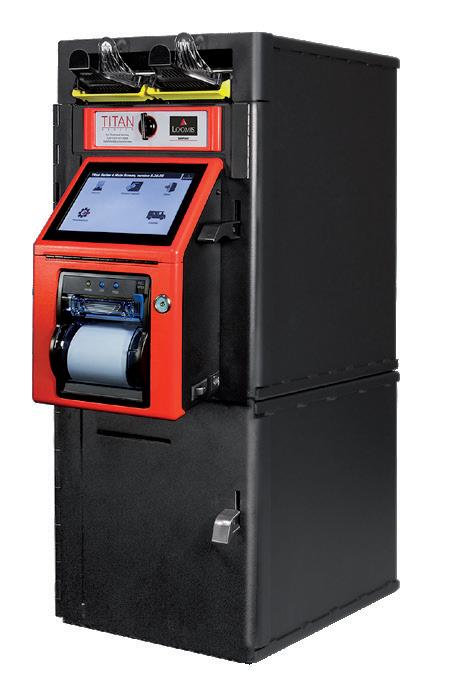
The restaurant industry is a fast paced, alwaysmoving, ever-changing piece of the American economy. It takes hard work and dedication to survive, let alone thrive as a restaurant in 2023. While the industry is a volatile one, however, it is also incredibly rewarding – serving people the food they love, and creating something that becomes a part of their daily lives.
The endless question remains: How can a restaurant reach those rewards quickly and efficiently?
One answer: Labels.
Yes, labels. It might not be the answer many people expect, but accurate and efficient labeling saves time and money while streamlining day-to-day and inventory operations so everyone – from the cashiers to the cooks to the managers on the floor – can focus on the things that matter most.
NCCO’s DateCodeGenie is built to do exactly that. Here’s how:
The DateCodeGenie automated labeling system gives restaurants the freedom and flexibility to create labels for everything they need. It prints accurate date and MRD (Made, Ready, Discard) labels, prep ingredients, nutrition information, and consistent, dynamic branding for growing restaurant chains. This makes fulfilling mobile, pickup, and delivery orders that have become increasingly common in a post-Covid restaurant landscape easy and efficient as well.
NCCO has been providing foodservice solutions for over 100 years. The DateCodeGenie is just the latest, innovative technology designed to help restaurants reach their full potential. Imagine a world where restaurants quickly and efficiently label food prep items, to-go orders and more while avoiding pitfalls like incorrect nutrition or allergen information, inaccurate sell-by dates or inventory stock, and other labeling headaches.

Accurate labeling also helps reduce food waste. With inflation squeezing every penny out of food budgets, it is increasingly important to ensure nothing ends up in the trash unnecessarily. Use-by labels printed by DateCodeGenie improve organization and help streamline inventory operations, so restaurants (and inspectors) never have to worry or wonder whether an item is fit to sell.
Whether a kitchen needs a stable device encased in stainless steel or a nimble device that can easily be moved, the DateCodeGenie enterprise of solutions offers several models to suit any kitchen setup and circumstance.
Plus – the DateCodeGenie’s centralized cloud-based software portal allows restaurants to modify existing templates or design from scratch with custom fonts, logos, and branding. The software also allows for flexibility within label design, customizing the look and feel of the brand based on specific location.
The best part: The cloud-based portal allows managers to control menu and label operations across multiple locations, creating, standardizing, and customizing labels from anywhere in the world. The DateCodeGenie’s intuitive software integrates seamlessly with existing APIs, and the drag-and-drop label builder makes the design process a breeze, with personalized startup training and continued tech support to help every step of the way. RET
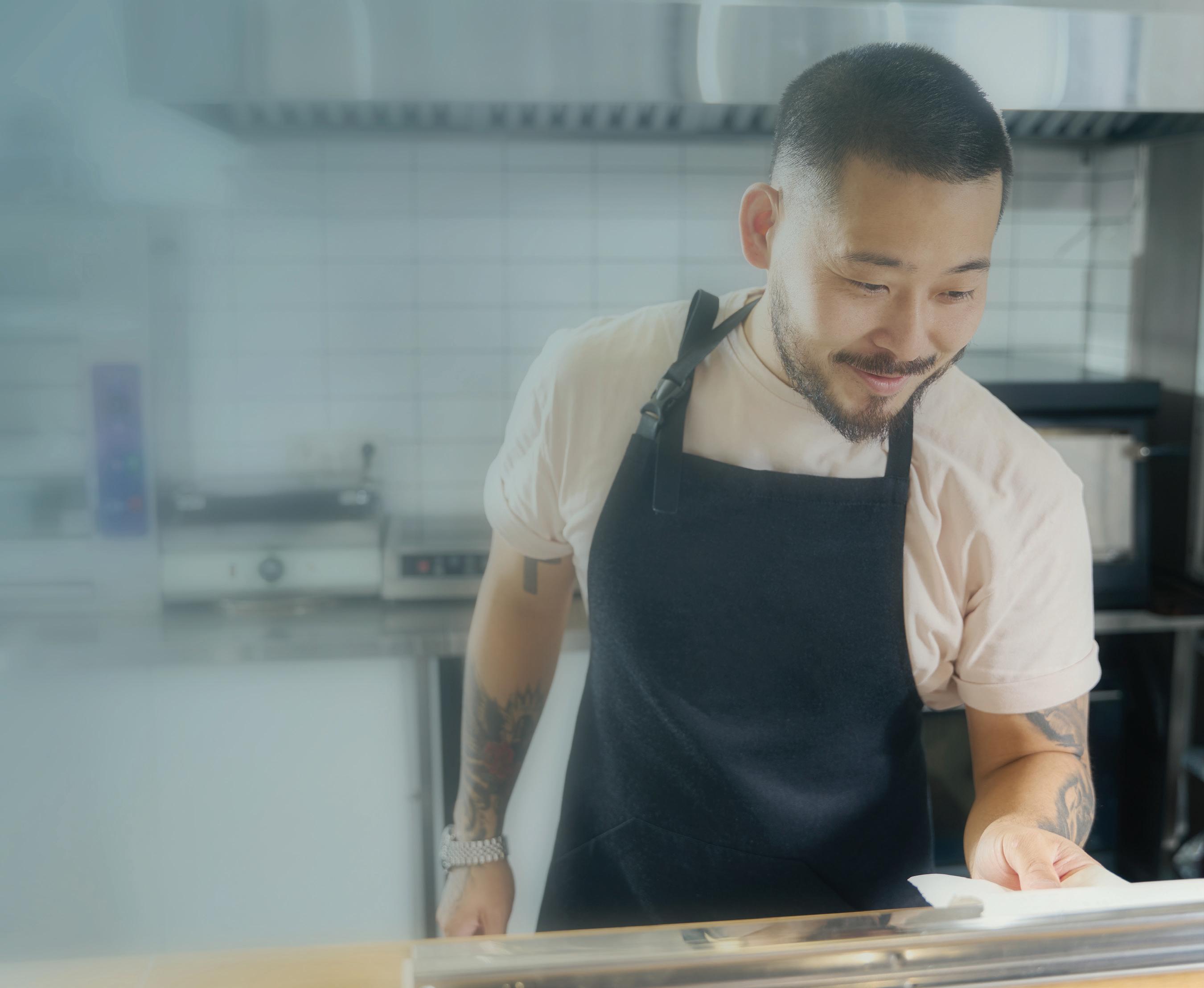

















As a bustling quick-service restaurant hummed with activity from the dinner rush, Sarah, a dedicated worker, was summoned to the backroom for the daily inventory count. Minutes ticked by as she painstakingly tallied items equipped with only a pencil and checklist. She occasionally returned to the front to help customers. Exhausted, Sarah’s mind wandered, double counting and missing items on her list.
After making her way through the entire back-of-house and ensuring to count the make-line, she turned her attention to enter the data into the restaurant’s tracking system. Her shift was ending and counts for ordering were due in just five minutes. There wasn’t time to check for mistakes.
This event plays out across restaurants on a daily basis.
In the fast-paced world of foodservice, managing inventory is a constant challenge. Whether operators are counting inventory for department counts, order placement, make-line checks, prep-
The most obvious is that counts are labor intensive. Often times these counts are performed by high value employees like a shift supervisor. Like Sarah, these resources should be focused on managing teams or engaging with guests. Instead, they’re in the backroom counting inventory.
Counts are also prone to inaccuracies that drive up food costs. By overordering products, operators open themselves to increasing food waste. Worse yet, not ordering enough leads to out-ofstocks and lost sales. Add to this the fact that inventory is the least-like job by employees, causing operators to reduce the frequency of counts.
Recognizing these pain points, Nomad Go, the leader in foodservice AI and computer vision, developed an innovative solution that promises to transform inventory management. Its platform, METAshelf, combines computer vision with augmented reality to automate inventory counts with a scalable hand-held solution.
Using METAshelf is like stepping into a futuristic world where inventory management is fast, accurate, and fun. Instead of manual data input, users quickly scan inventory using a device and instantly see data overlaid on top of the real world as they walk their store. This dramatically reduces the time and effort to complete an inventory job, but also delivers nearly perfect accuracy, which is then passed directly to an IMS or ordering system.
The technology is built to go anywhere. “Foodservice back-of-house environments are notoriously tight and crowded,” says Nomad Go’s CEO, David Greschler. “Whether inventory is stored on shelves in a dark corner or in temperature-controlled refrigerator or walk-in, Nomad Go’s AI can recognize, scan, and capture counts with nothing more than a commodity handheld device.”

list building, or confirming distributor deliveries, the traditional method of counting items is riddled with pain points and operational inefficiencies.
METAshelf doesn’t stop with counts; it empowers operators with a suite of features that drive efficiency and optimize operations. With real-time data, restaurant brands gain unparalleled visibility into their supply chain. This visibility unlocks upstream value, enabling predictive forecasts, automated ordering, and just-intime inventory. RET
To learn more, visit nomad-go.com.

Nomad Go’s METAshelf™ combines computer vision and augmented reality to automate stock counts in any foodservice environment, unlocking full supply chain automation. Power automated ordering, drive operational efficiencies and enhance the customer experience.


Computer vision enables st & accurate counts
10X Faster inventory counts
99% Count accuracy
$0 Fixed hardware & installation costs
Inventory management reimagined
LEARN MORE

operations are significantly impacted. Busy managers today do not have the time to diagnose and troubleshoot systems. To alleviate this burden, full-service solutions providers can be a single point of contact. In addition to providing service and repairs, the right partner can offer complete restaurant systems solutions, including proper installation and staff training. Based in Buffalo Grove, Il, R.F. Technologies is such a full-service partner, allowing the staff to focus on providing quality food and operate efficiently.
Scalability and flexibility are key aspects when evaluating available solutions. R.F. Technologies’ CEO Bob Noorian explains, “Technology needs vary over time, so operators need to predict the unpredictable. This means investing in flexible solutions to expand capacity while incorporating new features and scalable systems which communicate not only with existing systems, but also the next-generation as the market evolves. A full-service partner is not only aware of available technologies, it helps shape the future like we do with our Apex drive-thru headset system.”
The use of technology in restaurants has evolved far beyond point-of-sale, drive-thru communications, and kitchen displays. IT professionals are now responsible for managing a variety of systems, including digital menuboards, drive-thru timers, and surveillance systems. During the pandemic, self-order tools such as kiosks and mobile order apps became essential. Looking ahead, artificial intelligence and geo-notifications for mobile orders are poised to become the next focus in the effort to increase efficiency. Managing all these systems can be overwhelming. Having the right technology partner can lead to a competitive advantage, keeping restaurants’ focus on the customer.
IT professionals are not only responsible for maintaining the hardware, but also managing software upgrades, subscription services, and compatibility. When a system fails during a busy period,
Commonly, restaurant operators think about solving one specific problem when upgrading or replacing a piece of restaurant technology. The better practice is to think holistically about the restaurant and how the specific piece of tech fits into the overall environment. Here, too, is where the right partner adds value. An example is data traveling between systems, from the POS and the menuboard, to video analytics of a transaction and into subsequent reporting. This interoperability is essential to a comprehensive awareness of restaurant performance. It influences the customer experience and, ultimately, profitability. If data is siloed within disparate systems the complete understanding is often unattainable. A full-service technology partner knows how systems communicate and knows how to extract maximum value from the investment.
Technology is now an integral part of quick-service restaurants, and IT professionals have an essential role in managing various systems. The right partner helps ease the burden of maintaining systems and offers comprehensive solutions to keep restaurants running smoothly. RFT President Joseph Gierut concludes, “Technology evolves rapidly so restaurants need a trusted partner vetting available tools and recommending solutions providing the greatest value to the restaurant operator while minimizing risk and expenditures.” RET

Facing rising food and labor costs, franchisees are still expected to pay out the same royalties, marketing fees, and other fixed expenses. For these reasons, franchisees—and operators in general— are more focused than ever on finding places where top-line expenditures can be slashed.

One 20-unit franchisee group from a major restaurant chain—which wished to remain anonymous—recently installed an oil management system, Restaurant Technologies Total Oil Management solution, that is saving the brand $8,000 per year, per store in insurance expenses, reducing premiums by more than 20 percent from $769,447 to $612,838.
The system takes much or all of the risk out of handling cooking oil, which, according to a Restaurant Technologies study conducted by a major insurance provider, is responsible for approximately 60 percent of worker compensation claims in the quick-service space. For the franchisee group in question, installing the solution had become necessary. It wasn’t just about saving money—the Experience MOD stemming from worker compensation claims had increased from 1.32 to 1.62. The group knew it had to make a change, so leaders reached out to Restaurant Technologies.
Total Oil Management automates the entire process of handling cooking oil. Restaurant Technologies installs two oil tanks in the back of the restaurant, one for fresh oil and the other for waste oil. The fresh oil feeds directly into deep fryers at the push of a button, traveling through a secure tube to get there. When cooking oil is no longer fresh enough to create the quality fried foods operators and diners expect and exports the oil to the waste tank, a button is pressed, and the oil is seamlessly changed out. Notably, team members never have to lift large jugs of oil or handle oil that
is hot and could cause burns.
“Safety is the number one reason to install Total Oil Management,” says David Eha, director of national accounts at Restaurant Technologies. “It’s just better and safer for you and your people. The fact that it will also help you save money—I mean, 20 percent on insurance goes right to the bottom line and is the cherry on top.”
Eha says the solution is perfect for any restaurant brand of any size that has deep fryers. The company is approved to sell into the stores of franchisees who own some of the top brands in the industry: McDonald’s, Burger King, and KFC to name just a few. On top of saving on insurance costs, franchisee groups and other restaurant groups appreciate the fact that Total Oil Management has become an employee retention tool. In other words, not only does it keep employees safer, but it keeps them happier, too. With the backdrop of today’s labor climate, that’s no small thing. RET
To learn more, visit RTI-Inc.com.
With top-line costs rising, practical cost-cutting measures are more pivotal than ever.
LEARN MORE: WWW.RTI-INC.COM/INSURANCE-SAVINGS
Risk is part of any business, especially prevalent in the foodservice industry. Restaurant Technologies’ solutions have reduced risk for our customers by simplifying the most dangerous jobs in commercial kitchens for nearly 25 years. From automating cooking oil handling to keeping your hood and flue protected from hazardous grease buildup, we’ve got you covered. Meanwhile, your employees stay safe, your worker’s comp and fire risk is reduced, and your insurance carrier stays happy.
Save up to 15% on your insurance premiums with Restaurant Technologies solutions.


Given the ever-increasing array of brands and beverage flavors that cater to consumer preferences today, getting the right product mix to the customer at the right time is getting more and more difficult. This is especially true in manual applications that were originally set up to handle the more traditional fulfillment types, like full pallet and layer quantities. This is where automating an expensive process such as building a mixed SKU order pallet and leveraging a warehouse management software (wms) or warehouse control system (wcs) solution to pull the right product and build the right pallet in the right order comes into play. This saves on labor, operational costs, and helps to boost bottomline profits.
For distribution of beverages, a pallet full of soda can easily be picked and shipped. While this may be true for one or two brands or flavors, this certainly isn’t the case when adding in water, raspberry lemonade, Frappuccinos, and more. Things quickly start to go awry when figuring out the correct mix and sequencing
for these complex orders. This is when using automation to help build the perfect pallet for each storefront makes sense. Since automation saves on labor and eliminates picking errors, it will also increase profits, too.
An automated case picking system can be integrated with a high-bay warehouse system or can be leveraged as a complete standalone solution. Cases of each SKU are de-palletized and loaded into a robotic shuttle system. The software knows which product is needed for the customer order and will retrieve cases from the shuttle system for palletizing. Each case is then picked and palletized robotically. It does this case by case and uses a sophisticated palletization software to build the perfect pallet. It only must know the dimensions, weights, and whether, when, or where to place the exact products on the pallet. It can even handle sensitive products such as glass bottles. Product is also optimized to get the most on each pallet to increase the cube utilization within a trailer. This intelligent solution enables a faster way to build pallets, but it also enables a route sequencing order for distribution.
For distribution routes that are mapped out via distance, traffic routes, and more, the software understands which pallet should be built first so that it is loaded onto the truck for distribution first, second, last, and so on. This helps speed up distribution delivery. The same can also work with any chilled or frozen goods as well depending on the type of truck. RET
Since automation saves on labor and eliminates picking errors, it will also increase profits, too.
Restaurant beverage product orders can be complex, but automation can help manage mixed-product pallets while increasing profits and reducing picking errors.

With the simple push of a button, operators can provide consistent, delicious coffee.
When the pandemic hit, beverage sales plummeted. With restaurants relying on offpremises sales, not all consumers were adding beverages to their orders the way they had done pre-pandemic. With more diners returning to restaurants in 2021 and 2022, beverage sales have returned for the most part—especially when restaurants offer something that isn’t easily made at home.
Still, operators face a considerable number of challenges in today’s environment, such as inflation and continued labor concerns. As consumers are increasingly turning to foodservice for specialty beverages, operators have bolstered their operations. By introducing automation into their coffee programs, restaurants are offering consumers consistent, top-quality coffee that would be challenging to make at home—all while improving speed of service and cleanliness.
Speed of service has always been important to consumers, but during the past few years the stakes have risen—especially as operators see sustained traffic at the drive-thru window. According to the 2022 Drive Thru Report by Intouch Insight, “Technology and innovation have turned [quick-service] drive thrus into something hardly recognizable, and it has become the industry’s most innovative arena… Customers continue to prefer drive thrus when interacting with brands.”
The new Curtis Genesis Skyline was designed with operational efficiency in mind—especially applicable in the drive thru. This new machine brews fresh coffee from whole beans and is the first of its kind. The Curtis Genesis Skyline has the ability to automate coffee output based on demand. Maximum speed can


serve customers quickly and efficiently— allowing operators to serve the freshest coffee at top speeds. Not only can restaurants improve speed of service, but they also no longer have to worry about whether staff has cleaned the machine, thanks to fully automated cleaning daily via calendar programming.
With growing competition when it comes to coffee, inconsistency from day-to-day can cause consumers to look around and grab their coffee elsewhere. One problem operators face is drinks are made differently from barista-to-barista, or staff forgets to make a new batch of coffee and ends up serving customers out of a stale batch.
When operators introduce automation, consistency is guaranteed whether equipment is set to staff-operated or self-serve configuration. Consumers appreciate knowing exactly what they will receive day-today: a top-quality coffee, ground fresh from whole beans. This type of quality and precision builds customer loyalty.
While introducing automated coffee equipment will certainly improve a coffee program, it takes more than equipment to take coffee programs to the next level—it requires the right partner.
SEB Professional is three brands in one company—WMF, Schaerer, and Curtis. This allows SEB Professional to be a partner who has the resources and knowledge an operator needs to create a custom, on-demand coffee experience for their customers—no matter the size of an operation. RET
With growing competition across foodservice, operators need new technologies that increase coffee quality and also eliminate operational pain points.
The first machine of its kind, the Curtis Genesis Skyline automates coffee output based on demand so restaurants serve the correct amount of coffee during every daypart.

Kitchens across the U.S. have experienced heightened food costs, labor shortages, and labor costs during 2022. So, what does this all mean for the back-of-house? Increased operational costs, lower customer satisfaction, and new challenges to be solved with by technology.
In a recent study conducted by the USDA, researchers found that the cost of food in April 2022 was 9.4 percent higher than the previous year. It’s predicted that the cost of food will increase at a higher rate than previous years. One way to combat this is by mitigating food waste.
Over 85 percent of food loss and food waste issues are caused by temperature and time. By using remote temperature sensors, operators can be notified of real-time temperature changes before any food spoils or becomes unusable. This is especially important with cold storage products, such as meat or dairy, where you have a maximum of two hours to remedy an “out-of-range” temperature before that food must be disposed of.
Kitchen staff can also digitize food temp taking by utilizing Bluetooth probes that automatically populate HACCP logs. Solutions like BOHA! Temp connect your iOS devices to industry trusted temp probes for process that eliminates pencil-whipping and illegible handwriting all in one step.

Labor shortages were an industry concern long before the pandemic. However, a whopping seven out of 10 food service operators reported difficulty meeting labor demands in a 2022 report released by the National Restaurant Association. Not only is it difficult for operators to find and hire new staff, it’s also difficult to train them efficiently and retain them indefinitely.
One of the ways that operators have had newfound success in training employees is by digitizing recipe cards, instructional videos, how-to sheets, and other important resources. By using cloudbased solutions like BOHA! Media, employees across the globe can instantly access important resources right in the kitchen when they need them most. And another bonus, this also eliminates pricey reprints of recipe cards any time they get damaged or a recipe changes. All changes can be made from the cloud and pushed to dozens of locations in a matter of minutes.
By using back-of-house technology, operators in the foodservice industry have seen a significant reduction in the time it takes for employees to complete necessary tasks. For example, in a case study by BOHA!, implementing back-of-house technology saved retailers three hours a week on task management by digitizing checklists. In addition, when using BOHA! Labeling to automate date code processes, operators saw an average of 4.8 hours saved per week per location. When employees are so hard to come by, every minute counts. RET
How technology is revolutionizing the back-of-house.

Just one of many ways BOHA! digitizes your back-of-house.
Ditch the masking tape, paper, and pencils for a solution operators, franchisees, and BoH staff love. BOHA! automates and simplifies everything from labeling, to temping, compliance and HCAAP reports, checklists, employee training, and more:
• Slash labor costs
• Improve accountability
• Prevent unnecessary food waste
• Enhance Food Safety & Quality
Across ALL locations — from the cloud
www.transact-tech.com/qsr-mag
Quick-service restaurants rely heavily on drive-thru traffic to generate revenue. According to a recent study, approximately 70 percent of quickservice sales come from drive-thru orders. For this reason, quick-service restaurants are constantly seeking ways to improve the drive-thru experience and increase guest traffic.
One of the most effective ways to do this is through the use of digital reader boards, which can display a variety of information to customers, including menu items, pricing, promotions, and directions. Many quick-service operators are familiar with plastic manual reader boards and find that upgrading to digital saves time and presents a modern, relevant image.
“Because they can be programmed to show real-time updates, digital reader boards are an effective way to promote new products, highlight daily specials, and call attention to products based on the time of day, weather conditions, inventory, and other factors,” says David Watson, Watchfire’s director of corporate programs.
Digital reader boards also are an effective way to increase visibility for drive-thru customers. These boards are often larger and brighter than traditional signage, making them easier to see and read from a distance.
The Taco Bell Defy, launched last year in Brooklyn Park, Minnesota, offers an excellent demonstration of effective digital reader board implementation. As the franchise’s first twostory, drive-thru exclusive outlet, it aims to provide a two-minute or less drive-thru encounter for its patrons.

Equipped with four lanes, the eatery features large 2 feet x 5 feet high-definition digital reader boards manufactured from Watchfire, which aid in managing traffic for pre-orders, delivery drivers, and regular drive-thru visitors. The signage and architectural elements were designed and fabricated by Everbrite of Greenfield, Wisconsin.
Digital reader boards are so versatile, it may be difficult to know how to leverage them. Here are some best practices.
Make real-time updates on menu items: With a digital reader board, it’s easy to post last-minute messages to promote items, for instance, based on excess inventory or weather.
Promotion of new products and limited-time menu items: By incorporating photos, restaurants can effectively showcase their offerings, allowing customers to make informed purchasing decisions.
Increase revenue: By upselling meal combinations and encouraging impulse buys, restaurants can boost their revenue. Promote loyalty programs to keep customers coming back.
Improve the customer experience: By displaying wait times or estimated order completion, as well as drive-thru hours, restaurants improve transparency and allow customers to plan visits accordingly.
Provide directional signage: Reduce confusion and improve traffic flow by indicating where customers should enter, stop for ordering, pick up food, and exit.
Maintain consistent branding: Reinforce brand recognition and customer loyalty by incorporating elements, such as the restaurant’s logo, color scheme, and other branding elements.
Overall, effective quick-serivce drive-thru signage is critical to the success of the customer's drive-thru experience. Digital reader boards make messaging clear and easy to read, provide opportunities to drive revenue, and create a positive and memorable overall brand experience. RET
To learn more, visit watchfiresigns.com.








Increase your QSR’s drive-thru traffic and boost sales by promoting new menu items, menu specials, and rewards program perks. Display eye-catching, dynamic brand-approved messages that uphold your QSR’s brand standards.



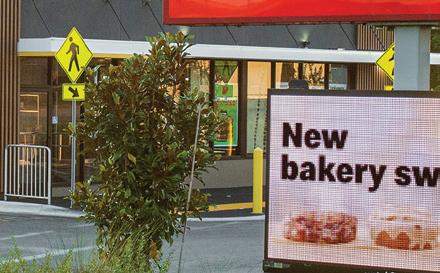








Maintain message flexibility with our Ignite OPx content management software. Ignite OPx allows users to program messages months in advance or make last-minute changes and streamline your sign messaging for one location or many.




Our reputation is built on your digital reader board looking and performing great, not just for one day but for its lifetime.

VISIT OUR WEBSITE AT WATCHFIRESIGNS.COM OR CALL US AT 844-805-8880










The drive thru has long been the lifeblood of the quick-service industry, but the pandemic helped refocus the attention of consumers and operators alike on the importance of an efficient drive-thru operation. Anything that helps speed up transactions, increase order accuracy, and help brands create a better experience for their customers has mutual benefit to quick-service brands and their loyal followers.
Xenial (pronounced zee-nee-ul) is a single technology platform that offers “end-to-end, enterprise-ready restaurant solutions, customer engagement tools, and global reach,” says Tracy Gallimore, vice president of sales with Xenial.
“While others have been talking about the ‘drive-thru of the future,’ we’ve been building it,” Gallimore says. “Xenial Next-Gen Drive-Thru gives restaurants full visibility into their growing drive-thru channel, along with an integrated set of tools to drive sales. It’s all powered by our patent-pending Next-Gen Drive-Thru Controller, which can give brands a return on investment in as little as nine months.”
According to Gallimore, here’s how Xenial’s Next-Gen DriveThru Controller can help restaurants increase velocity and sales within a drive thru.

The system helps capture speed of service metrics in any facet of an operation’s drive thru with a timer system that is powered by cameras and artificial intelligence (ai). Xenial’s clients reduce drive-thru times by about 12 seconds or more when leveraging the company’s technology.
Additionally, brands can manage rising labor costs and address labor shortages with the system’s voice assistant ( “bot” ) -driven ordering and self-service kiosks, helping replace manual labor once done by employees.
Restaurants enjoy an increase in average check size using AI-driven automated upselling, along with bright, engaging displays that help connect the brand to its consumers. Xenial’s clients report a 2.5 percent boost in overall sales and 2 percent increase in both LTO and combomeal upsells.
The payment process can be simplified and sped up by using QR codes that help drive the customer to an online payment platform.
Xenial’s Next-Gen Drive-Thru Controller helps unite an ecosystem of products under its platform, including AI-enabled voice ordering, a recommendation engine, and camerabased timer, along with ports for drive-thru hardware, such as base station, mic, speaker, and OCU.
“With over 30 years of experience, Xenial has a direct presence in 62 countries, serving 51,000 locations and another 110,000 cloud merchants, including 20 of the top 50 quick-service brands in the U.S.,” Gallimore says. “Our namesake comes from the Greek word for hospitality and that’s a reference to our obsession to power your enterprise’s hospitality success. We would love to connect with your brand and help introduce our solution for the future of the drive thru.” RET
Operators report a return on investment in as little as nine months after installing this solution.
“While others have been talking about the ‘drive-thru of the future,’ we’ve been building it.”

































































































































































































































Learn
3 Dedicated to foodservice safety and compliance by offering innovative, easy-to-use sanitation solutions.




3 Powered by the largest global manufacturer of wipes and a national network of distributor partners.

3 Focused on delivering personalized, operator-focused support from field testing to training and supply.

Food Safety Unwrapped presented by Sani Professional is a who’s who of quick service food safety experts featuring Jorge Hernandez (Wendy’s), Dr. James Marsden (Chipotle), John Zimmermann (First Watch), Dr. Mary Wagner (Starbucks), Dr. Steven Lyon (Chick-fil-A) and more! Tune in to learn how the industry’s food safety leaders are prioritizing food safety to elevate customer experiences and improve business outcomes.
